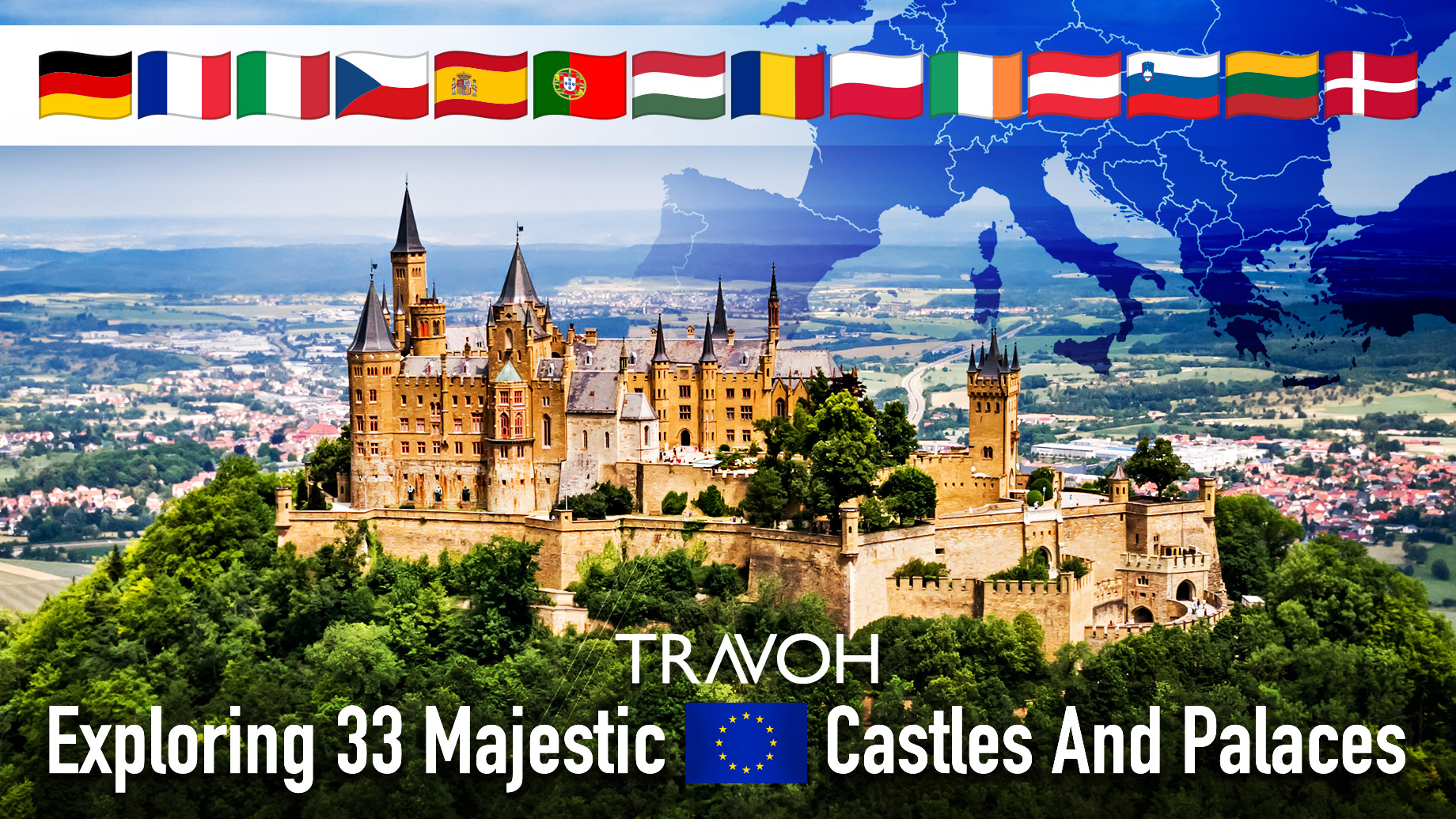
Europe, a veritable treasure trove of cultural heritage and architectural splendour, beckons travellers from far and wide to explore its rich tapestry of history. As one traverses the continent, the magnificent castles and palaces that dot the landscape stand as enduring symbols of Europe’s storied past. These grand structures, each with its own unique charm and narrative, captivate the imaginations of visitors as they bear witness to the fascinating tales etched within their walls. In this article, we embark on a journey to discover the allure and mystique of 30 of the most remarkable castles and palaces across the European Union.
These architectural masterpieces, having withstood the test of time, serve as proud sentinels of Europe’s vibrant history, from the soaring towers of Germany’s Neuschwanstein Castle to the sprawling majesty of France’s Palace of Versailles. With each castle and palace boasting its own distinct style and character, they offer a fascinating window into the lives of the kings, queens, and nobility who once graced their halls. As visitors delve into the captivating stories that shaped these awe-inspiring structures, they are transported to an era of chivalry, romance, and political intrigue, where monumental decisions were made, and destinies forged.
Whether one is a seasoned traveller seeking to expand their historical knowledge or a first-time visitor eager to experience the beauty and grandeur of Europe’s cultural landmarks, this curated collection of castles and palaces promises to enchant and inspire. So, join us as we traverse the European continent, delving into the rich history and architectural prowess of these extraordinary destinations that continue to captivate the hearts and minds of those who venture within their storied walls.
1. Neuschwanstein Castle: The Fairy-Tale Dream of a Reclusive King
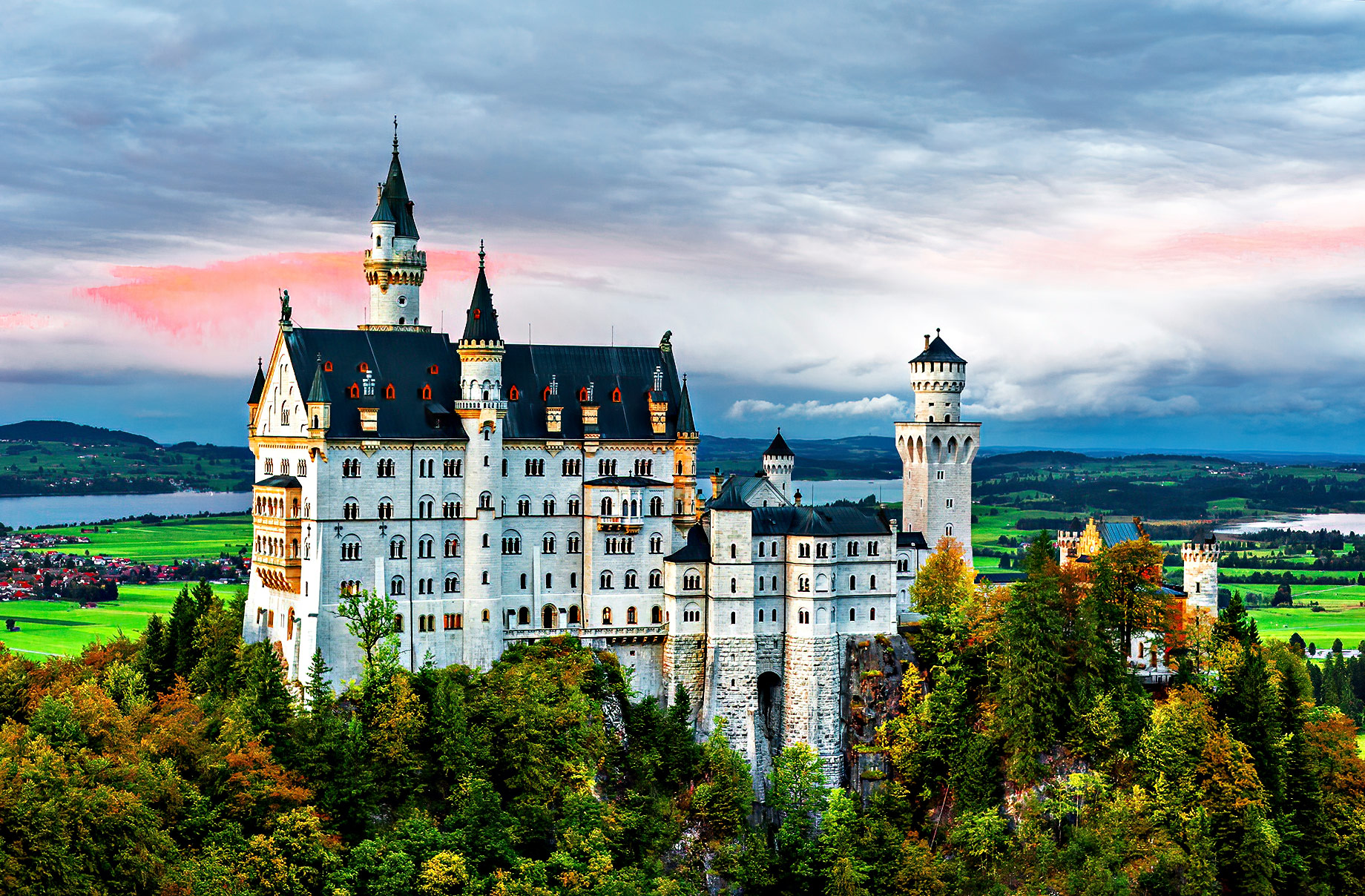
Nestled in the picturesque Bavarian Alps in Germany, Neuschwanstein Castle is a quintessential symbol of European romanticism. Commissioned by King Ludwig II of Bavaria in the late 19th century, the castle served as a private retreat for the reclusive monarch, who was captivated by the works of composer Richard Wagner. This influence is evident in the castle’s opulent interiors, which showcase scenes from Wagner’s operas in magnificent frescoes. Today, Neuschwanstein welcomes millions of visitors annually, who are enchanted by its soaring towers, idyllic location, and richly adorned interiors.
2. Palace of Versailles: A Testament to the Grandeur of the French Monarchy
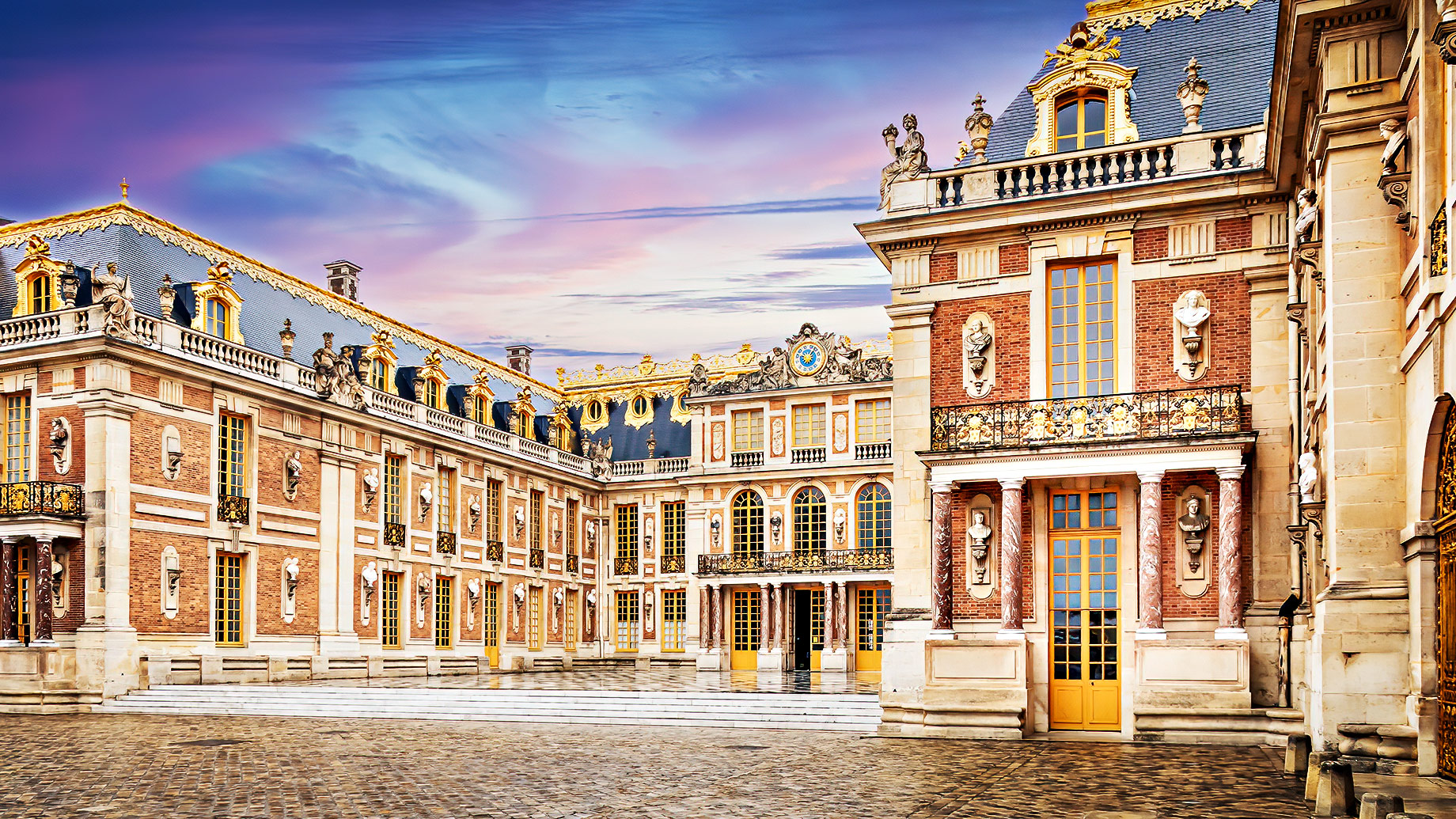
A short distance from Paris lies the Palace of Versailles, an embodiment of royal extravagance and political power. Constructed by Louis XIV in the 17th century, Versailles was intended to showcase the might and wealth of the French monarchy. The palace’s vast apartments, breathtaking Hall of Mirrors, and sprawling gardens and fountains continue to captivate visitors. The palace also houses an impressive collection of European art, including masterpieces by renowned artists such as Le Brun, Le Sueur, and Rigaud.
3. St. Marks Basilica: A Jewel of Byzantine Art and Architecture
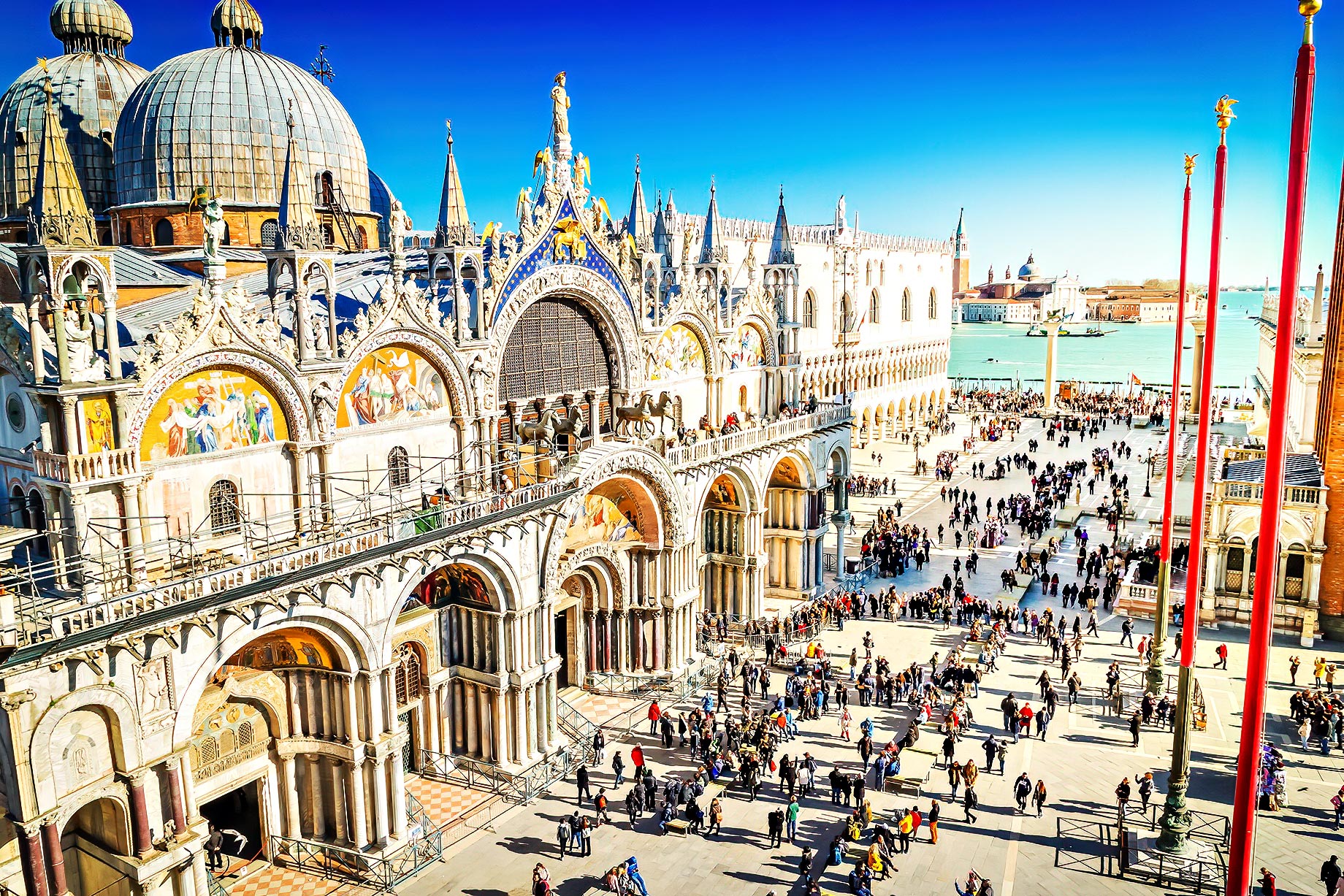
In the heart of Venice, St. Marks Basilica stands as an emblem of the city’s religious and cultural heritage. Constructed in the 11th century, the basilica is renowned for its stunning Byzantine architecture, intricate mosaics, and gilded ceilings. Visitors are awestruck by the Pala d’Oro, a gold and jewel-encrusted altarpiece, and the Tesoro, a treasury of precious artifacts and relics. St. Marks Basilica remains a must-visit destination for art enthusiasts and history buffs alike. Book your St. Marks Basilica tickets now.
4. Prague Castle: A Tapestry of Architectural Styles Spanning Centuries
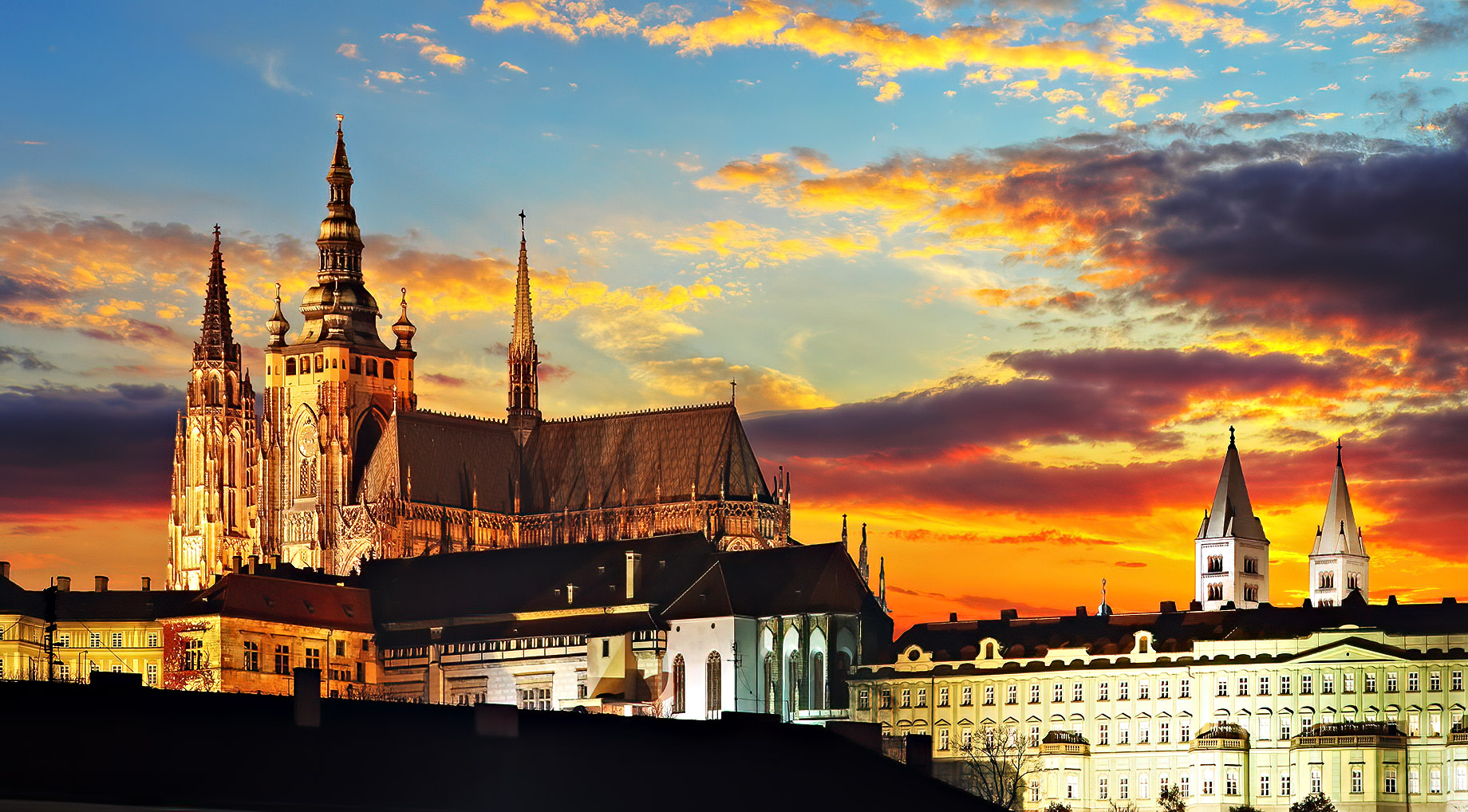
Dominating the city’s skyline, Prague Castle is among the largest and oldest castles in the world. With a history dating back to the 9th century, the castle complex boasts a melange of architectural styles, from Gothic to Baroque and Renaissance. Key attractions include the awe-inspiring St. Vitus Cathedral, the enchanting Golden Lane, and the historic Vladislav Hall. The castle also hosts numerous museums and galleries, offering a glimpse into the rich cultural heritage of the Czech Republic. Book your Prague Castle tickets now.
5. Alhambra Palace: A Masterpiece of Moorish Art and Architecture
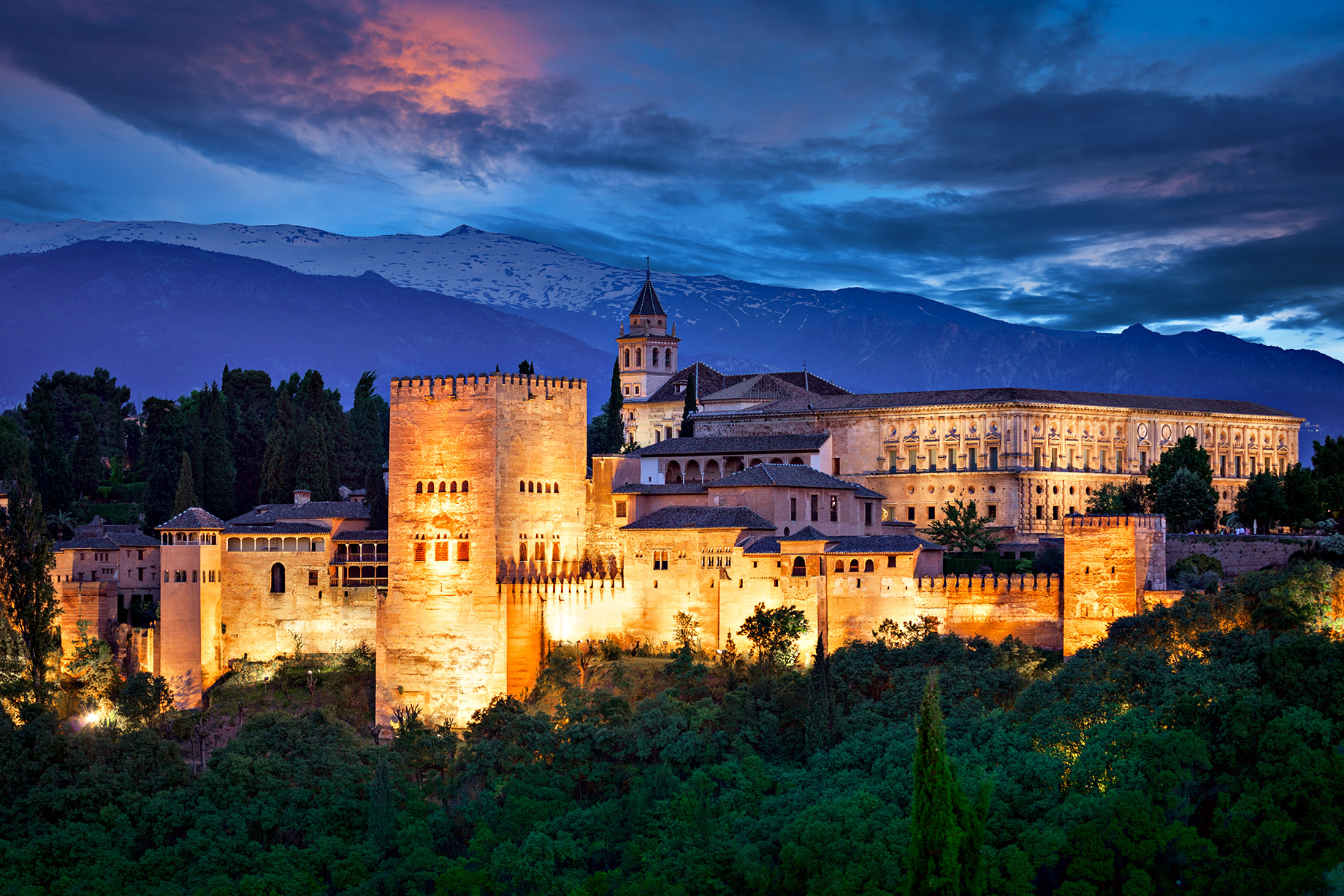
The Alhambra Palace in Granada, Spain, stands as one of Europe’s finest examples of Moorish architecture. Constructed in the 14th century, the palace is a testament to the artistic and architectural prowess of the Nasrid Dynasty. The Alhambra’s stunning gardens, intricate tilework, and ornate archways transport visitors to a bygone era. Key highlights include the enchanting Court of the Lions, the breathtaking Hall of the Ambassadors, and the serene Generalife Gardens, which offer a glimpse into the refined lifestyle of the Nasrid rulers.
6. Château de Chambord: A Marvel of French Renaissance Architecture
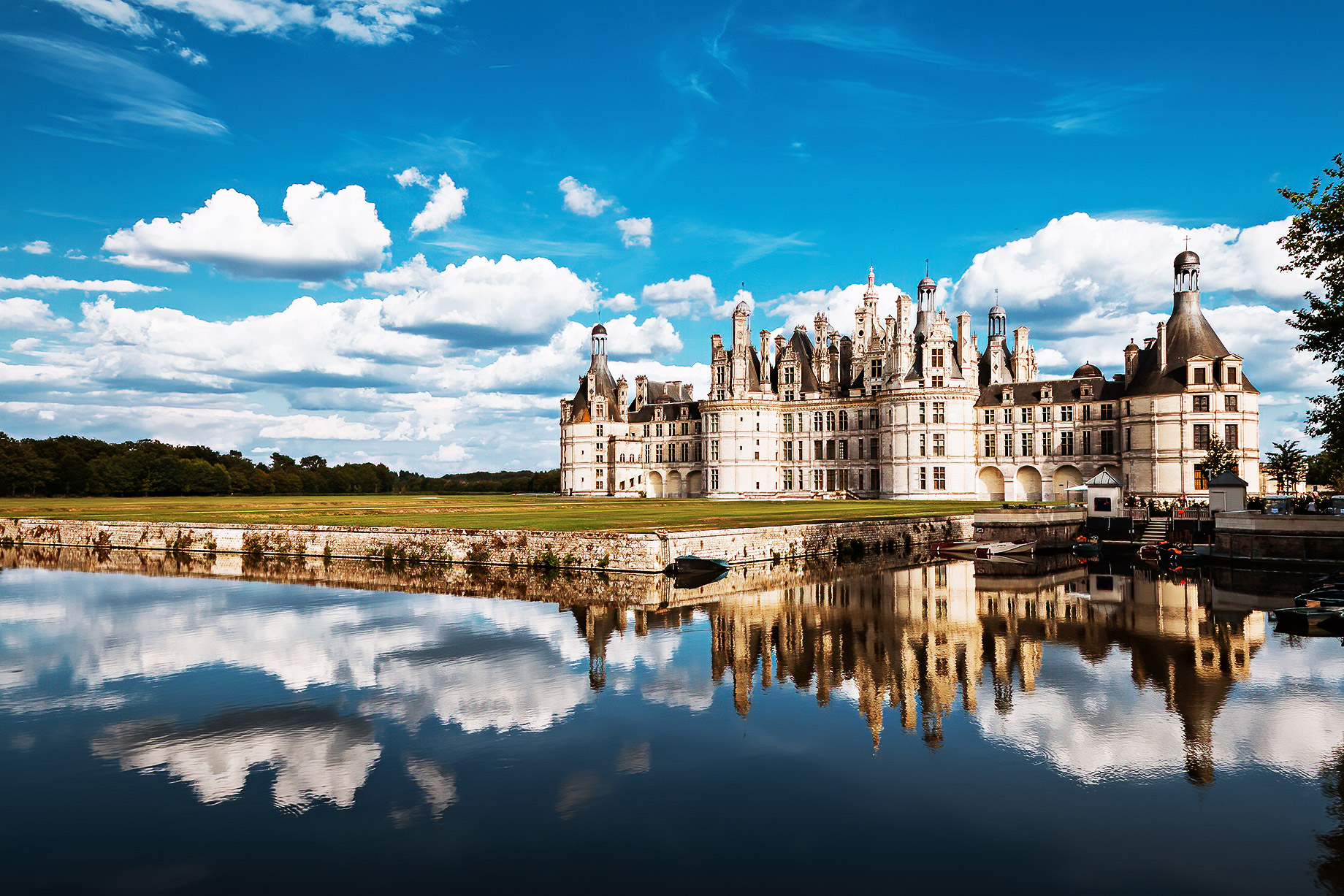
Nestled in the picturesque Loire Valley, the Château de Chambord is an exquisite example of French Renaissance architecture. Commissioned by King Francis I in the 16th century, the chateau features majestic towers, intricate stonework, and a remarkable double-helix central staircase, which is rumoured to have been designed by Leonardo da Vinci. Visitors can explore the castle’s many rooms and galleries, including King Francis I’s opulent apartments and the magnificent hunting room, which pays homage to the king’s passion for the sport.
7. Pena Palace: A Romantic Fantasy Amidst the Sintra Mountains
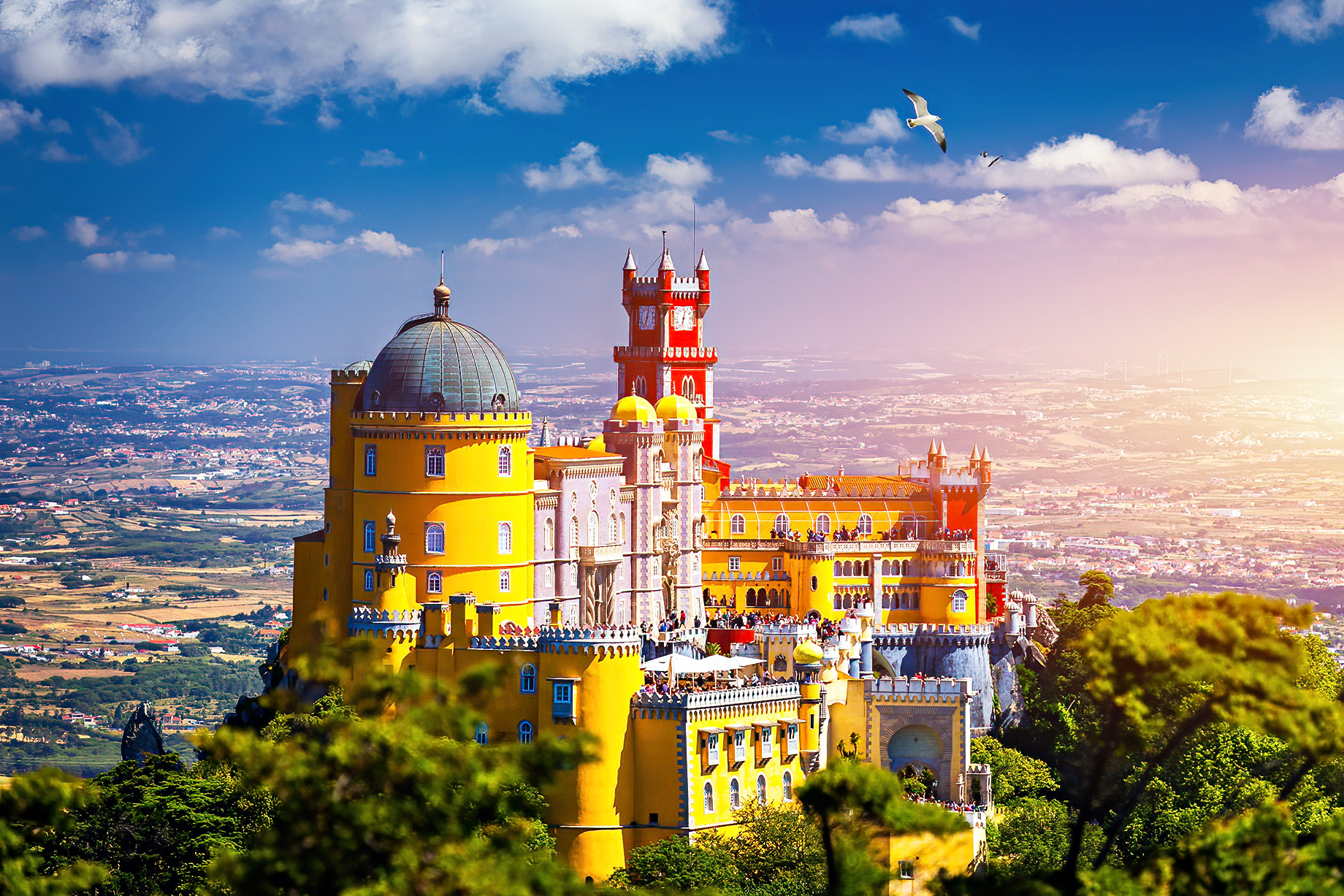
Perched atop a hill in the Sintra Mountains of Portugal, Pena Palace is a vivid architectural gem that embodies the spirit of Romanticism. This UNESCO World Heritage Site captivates visitors with its eclectic blend of Neo-Gothic, Neo-Manueline, and Neo-Renaissance styles. The palace’s bright colours, ornate façade, and lush gardens create a fairy-tale-like atmosphere that invites exploration. Step inside to discover lavish interiors adorned with intricate stuccowork, murals, and priceless artifacts from Portugal’s storied past.
8. Buda Castle: The Royal Bastion Overlooking Budapest
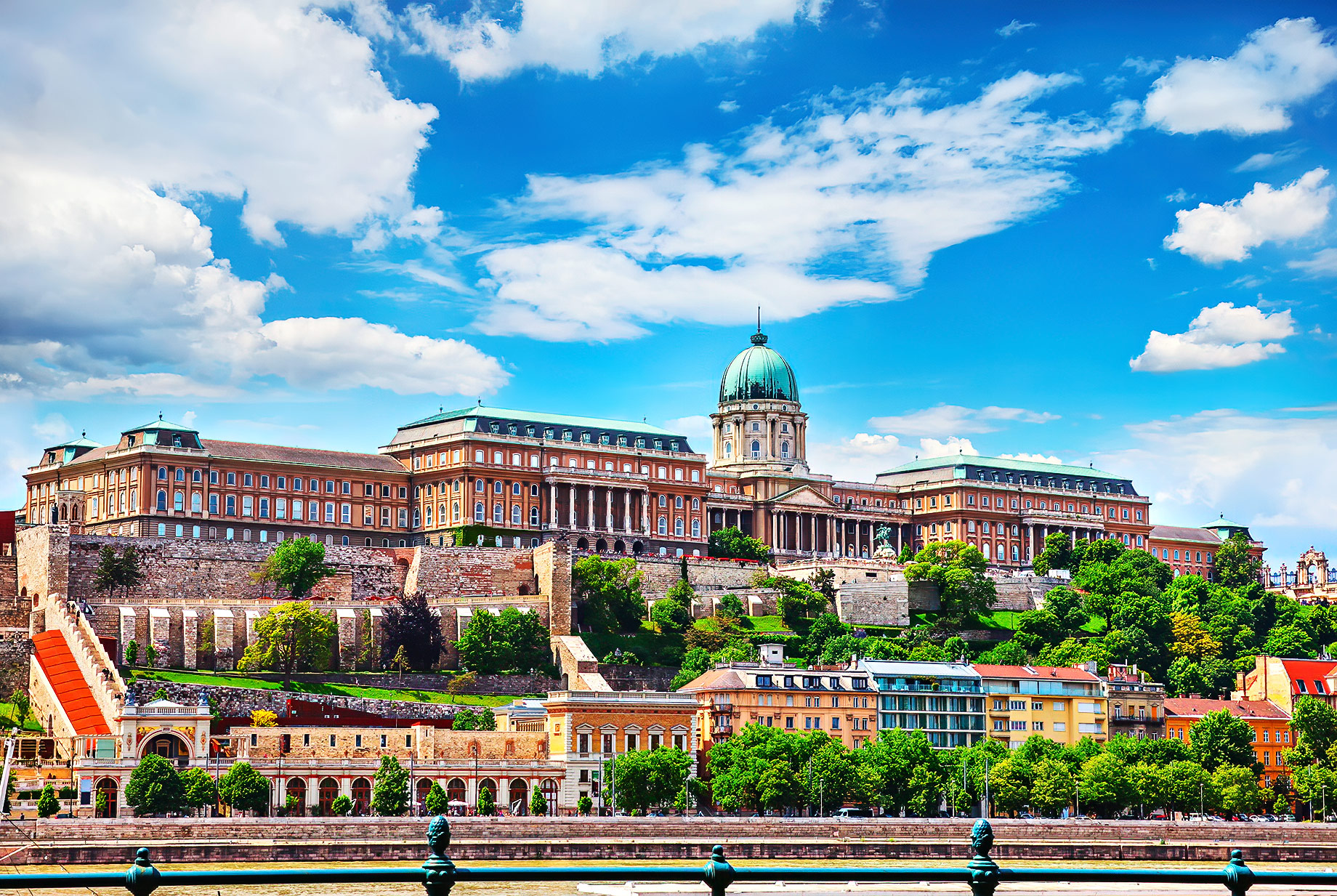
Majestically situated on Castle Hill, Buda Castle is a historic complex that has dominated the skyline of Budapest for centuries. The castle, also known as the Royal Palace, has been home to Hungarian kings and served as a strategic stronghold. Today, it houses the Hungarian National Gallery and the Budapest History Museum, offering a fascinating journey through the country’s rich history and cultural heritage. Stroll through the charming courtyards and admire the stunning views of the Danube River and the city below.
9. Bran Castle: Delving into the Myths of Dracula’s Lair
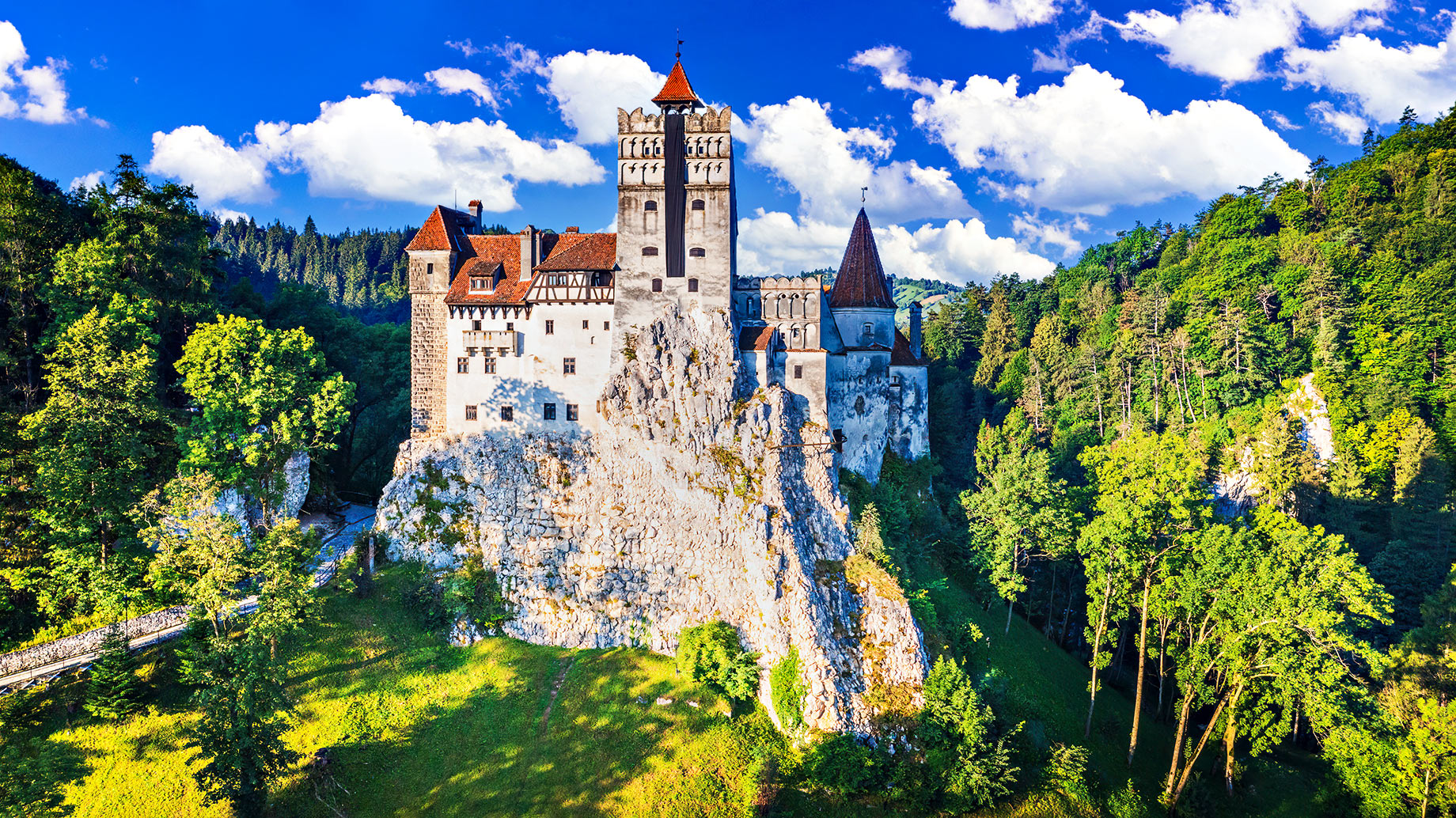
Nestled in the heart of Transylvania, Bran Castle is famously associated with the legend of Count Dracula. While the connection to Bram Stoker’s fictional character is tenuous, the castle does have ties to the real-life Vlad the Impaler, who inspired the Dracula myth. Visitors can explore the castle’s winding staircases and hidden passages while learning about the region’s customs and history. Don’t miss the opportunity to wander through the castle’s picturesque courtyard, which offers sweeping views of the surrounding landscape.
10. Château de Chenonceau: Graceful Elegance Spanning the River Cher
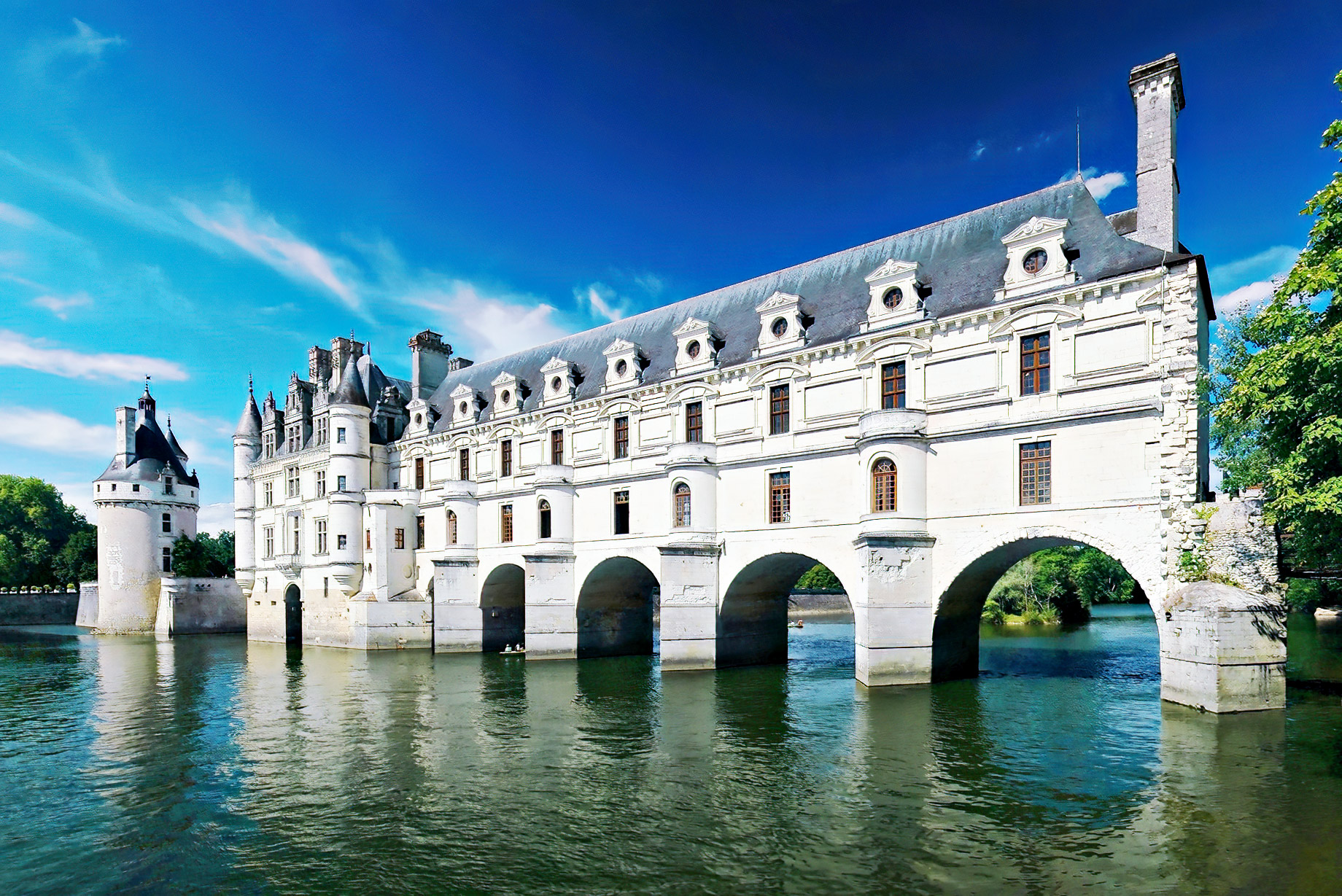
Elegantly stretching across the River Cher, Château de Chenonceau is an iconic symbol of French Renaissance architecture. With its enchanting gardens, charming arched bridge, and richly decorated interiors, the chateau is a beloved destination in the Loire Valley. Explore the grand halls and intimate chambers, adorned with priceless art and tapestries, and be sure to wander through the beautifully manicured gardens that showcase the exquisite harmony between nature and architecture.
11. Malbork Castle: The Imposing Red-Brick Stronghold of the Teutonic Knights
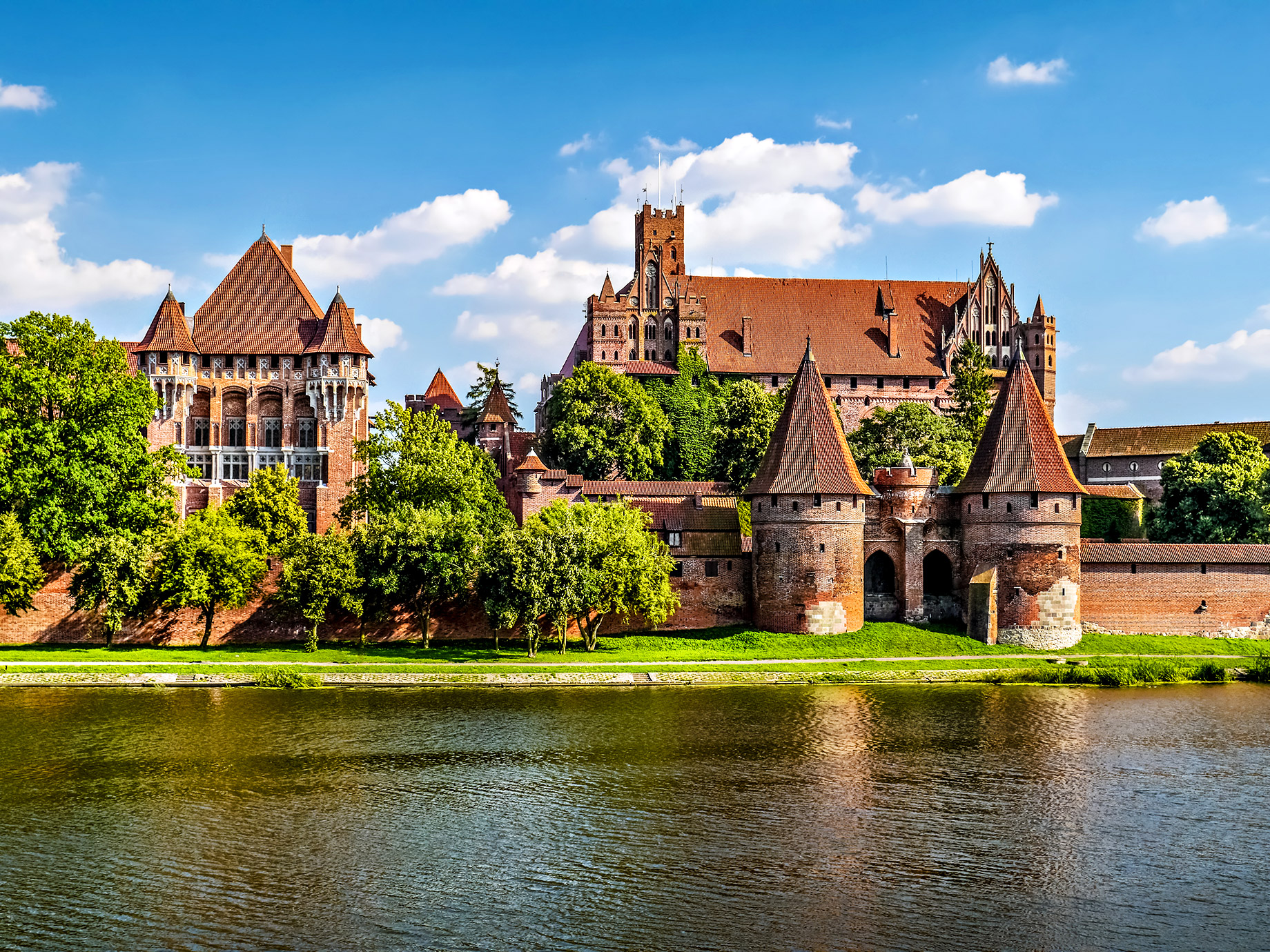
Standing tall in Malbork, Poland, this formidable fortress is the largest brick castle in the world. Constructed by the Teutonic Knights in the 13th century, Malbork Castle reflects the military prowess of the medieval order. Today, visitors can delve into the fascinating history of the Teutonic Knights by exploring the castle’s museum, which houses a wealth of artifacts, weaponry, and armour. Wander through the vast complex, taking in the grandeur of the soaring towers and impressive Gothic architecture.
12. Peleș Castle: A Neo-Renaissance Jewel Nestled in the Carpathians
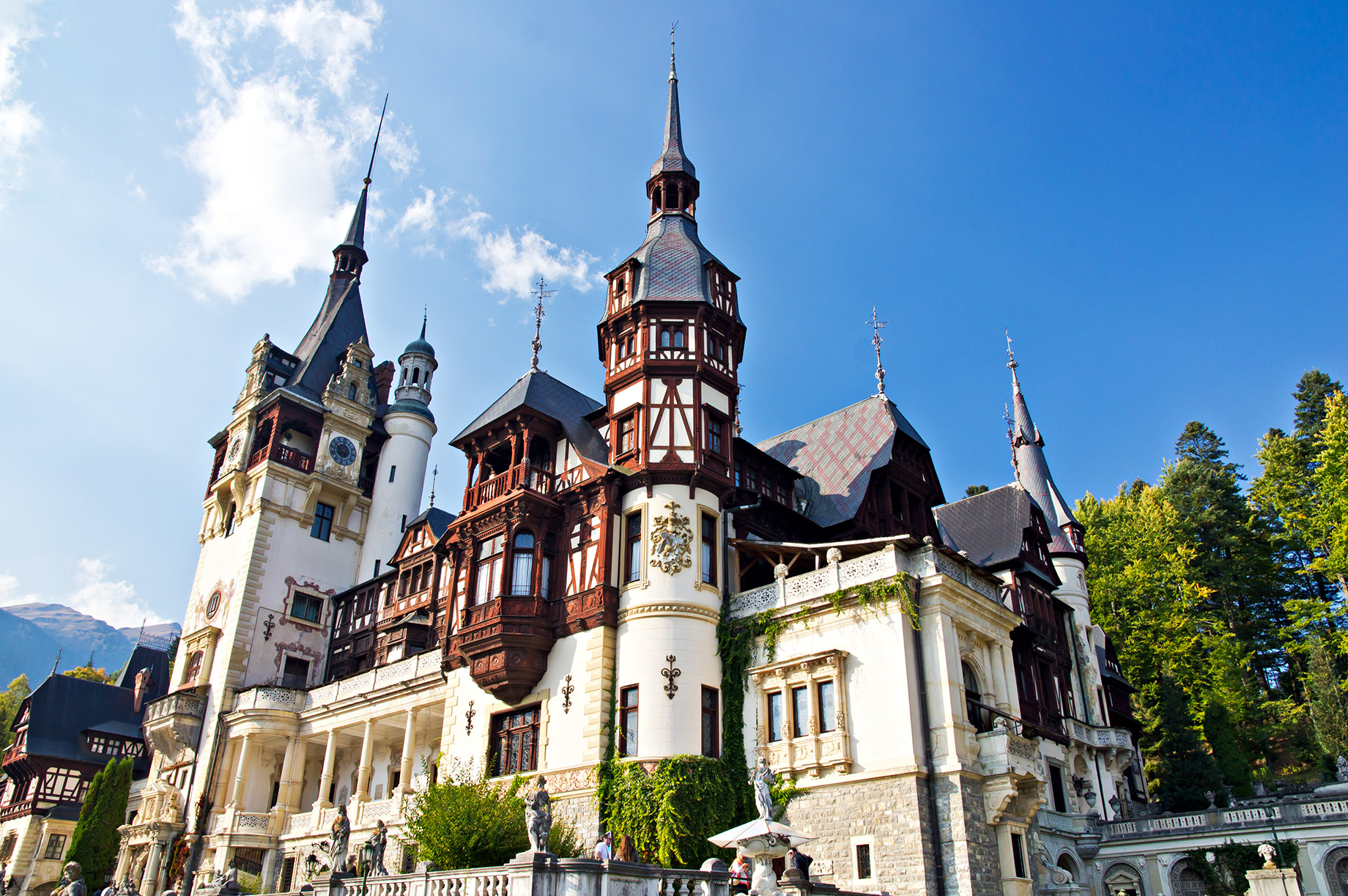
Surrounded by the breathtaking Carpathian Mountains, Peleș Castle is a stunning Neo-Renaissance palace that once served as the summer residence for the Romanian royal family. The castle’s opulent interiors showcase an impressive collection of European art, weapons, and armour. Wander through the lavishly decorated rooms, including the grand Maura Salon, adorned with intricate wooden carvings, and the impressive armoury, housing an extensive collection of medieval weaponry. Don’t forget to explore the beautifully landscaped gardens, which offer a tranquil retreat amidst the mountainous landscape.
13. Kilkenny Castle: A Norman Legacy in the Heart of Ireland
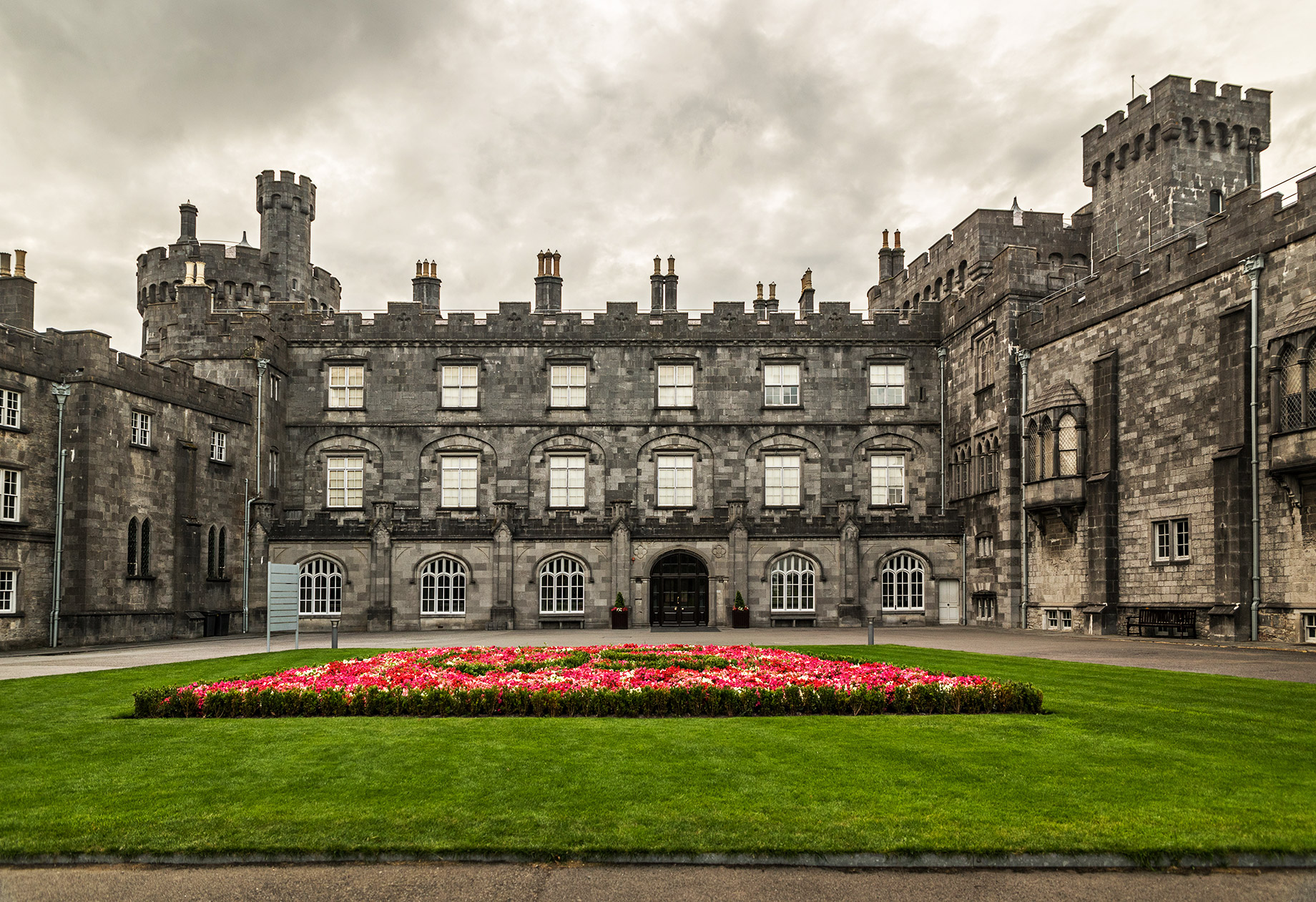
Kilkenny Castle, a 12th-century Norman stronghold, stands proudly in the heart of Kilkenny, Ireland. Over the centuries, the castle has undergone extensive renovations, transforming it into a magnificent symbol of Irish history. Visitors, particularly those from the US, often find themselves enchanted by the charm of Ireland and may consider a more permanent connection to this land steeped in culture and heritage. For those contemplating such a move, finding detailed information and guidance is crucial, and resources like moving to Ireland from the US can be immensely helpful. The castle itself, with its beautifully restored interiors, such as the Picture Gallery housing a vast collection of paintings, and the elegant State Dining Room, along with the serene parklands offering picturesque views of the castle and the River Nore, serve as a vivid reminder of the rich history and inviting atmosphere of Ireland.
14. Miramare Castle: A Seaside Retreat for Austrian Royalty
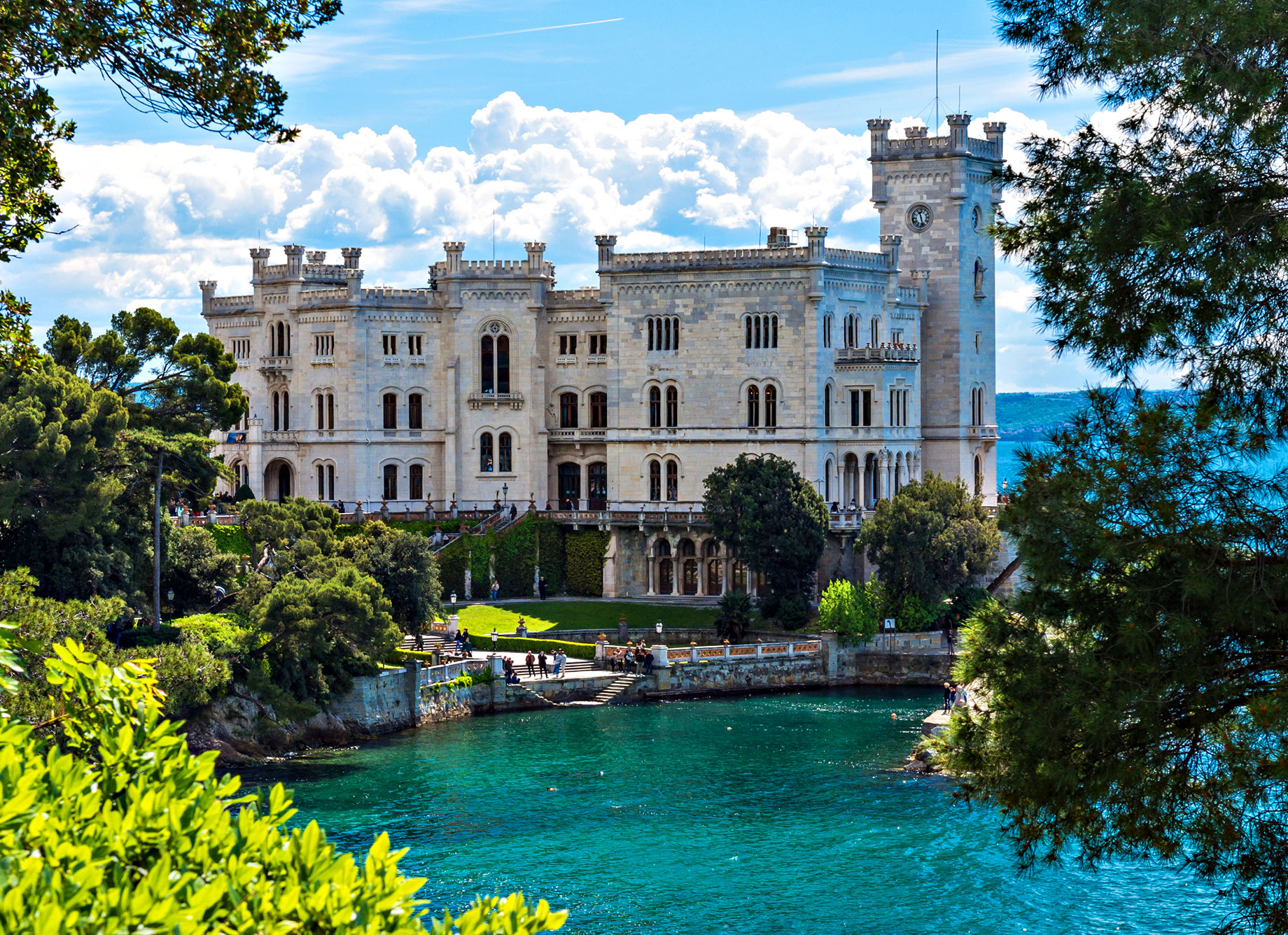
Overlooking the Gulf of Trieste, Miramare Castle is a 19th-century Austrian palace built for Archduke Ferdinand Maximilian of Austria and his wife, Charlotte of Belgium. This magnificent white structure, surrounded by a lush park, boasts a breathtaking location along the Adriatic coast. Step inside to discover the castle’s lavish interiors, including the royal apartments, adorned with exquisite furnishings and artwork. Stroll through the extensive gardens, which provide a tranquil escape with panoramic views of the glistening sea.
15. Schönbrunn Palace: The Habsburgs’ Baroque Masterpiece
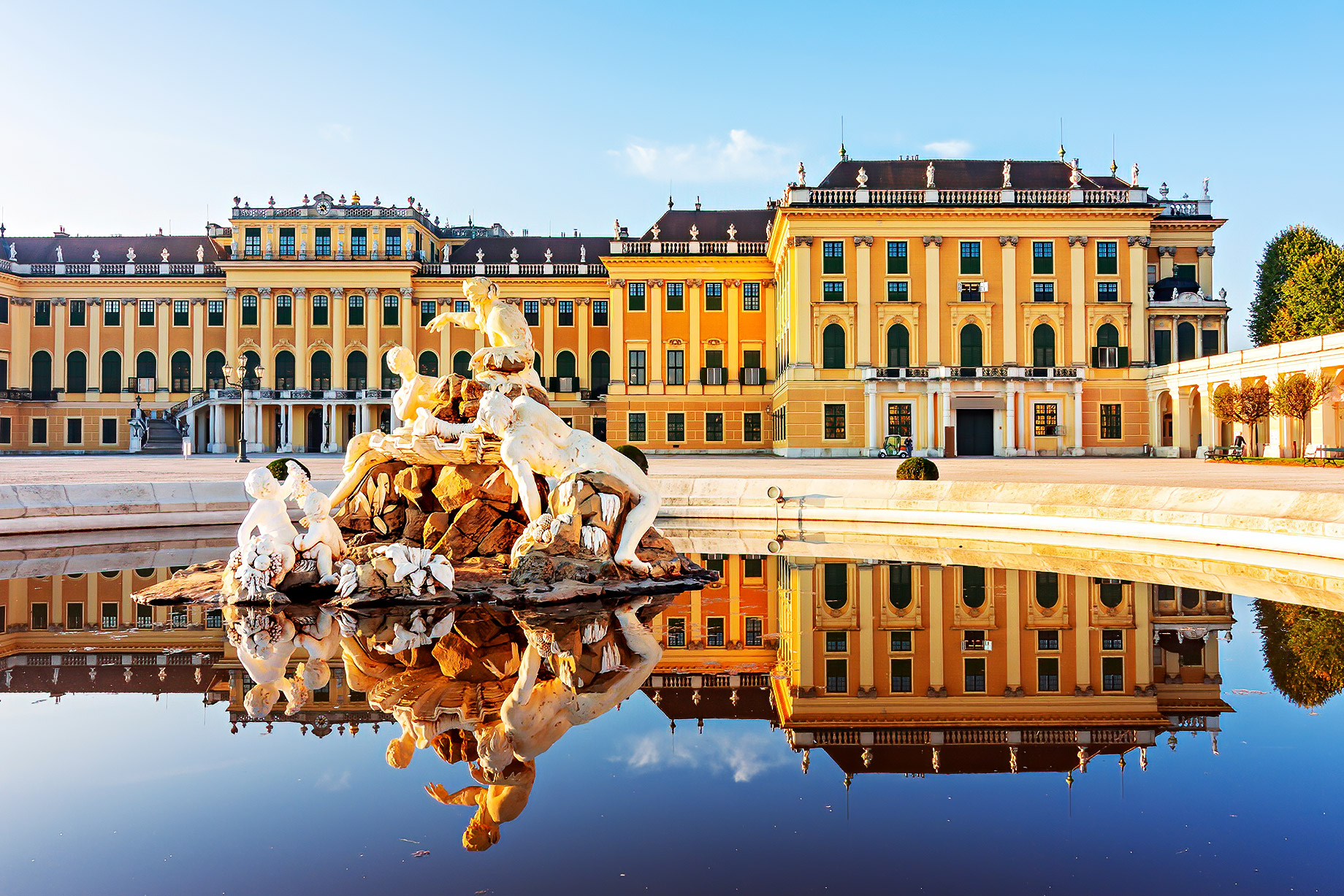
Once the summer residence of the Habsburg dynasty, Schönbrunn Palace is a striking Baroque palace located in Vienna, Austria. The expansive gardens, adorned with fountains and sculptures, perfectly complement the palace’s architectural grandeur. Highlights of a visit to Schönbrunn include the opulent Great Gallery, the enchanting Hall of Mirrors, and the Gloriette, a triumphal arch that offers sweeping views of the city. As you explore the palace’s sumptuous rooms and verdant gardens, you’ll gain a deeper appreciation for the extravagance and power of the Habsburgs.
16. Hohensalzburg Castle: A Medieval Fortress Perched Above Salzburg
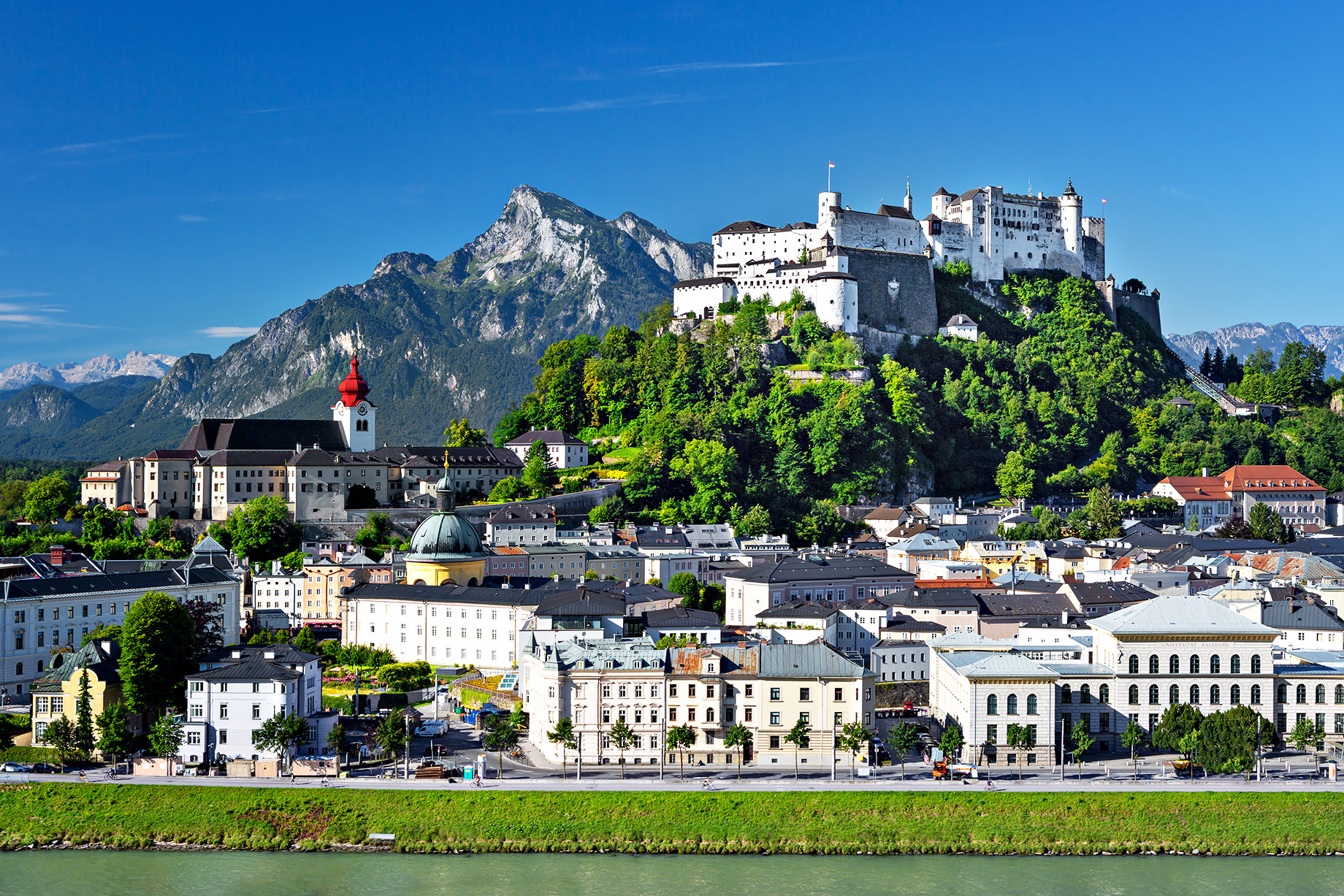
Dominating the Salzburg skyline, Hohensalzburg Castle is an 11th-century fortress that stands as one of the largest and best-preserved medieval castles in Europe. Perched on a hill overlooking the city, the castle offers unparalleled views of Salzburg and the surrounding mountains. Venture inside to explore the castle’s museum, showcasing a range of artifacts that reveal the fortress’s storied past. Discover the lavish royal chambers, marvel at the impressive weaponry on display, and experience the breathtaking panorama from the castle’s lofty vantage point.
17. Wawel Castle: A Polish Royal Legacy in Kraków
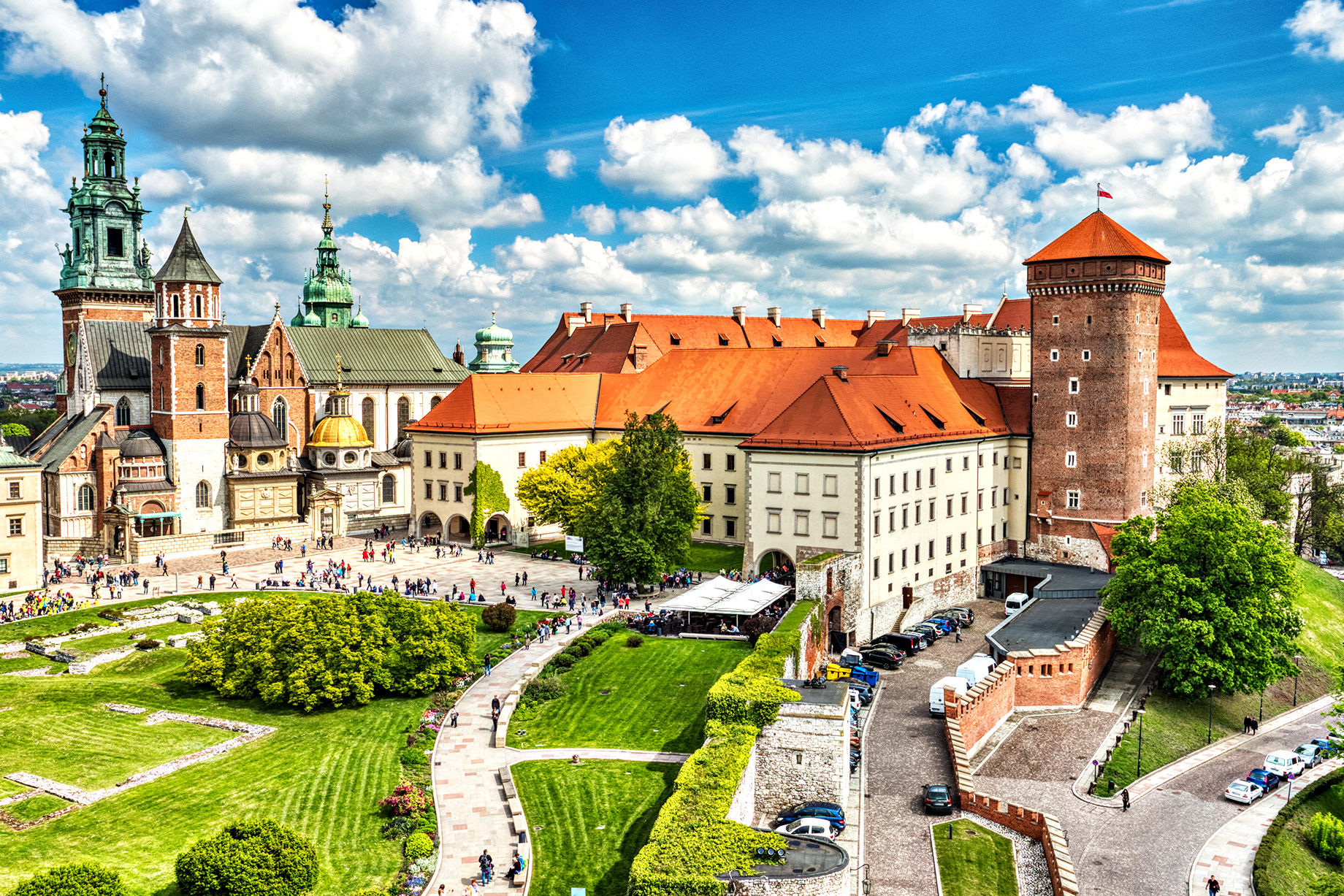
Situated on Wawel Hill in Kraków, Poland, Wawel Castle is a symbol of Polish history and a testament to the nation’s rich cultural heritage. This royal residence has been home to Polish kings for centuries and is an impressive architectural complex that features a mix of Gothic, Renaissance, and Baroque styles. As you wander through the castle’s courtyards and chambers, you’ll discover a wealth of art and artifacts that span the centuries, including the Crown Treasury and Armory, the Royal Private Apartments, and the stunning Wawel Cathedral. A visit to Wawel Castle is a must for anyone exploring the historic city of Kraków.
18. Royal Palace of Caserta: A Regal Vision in Southern Italy
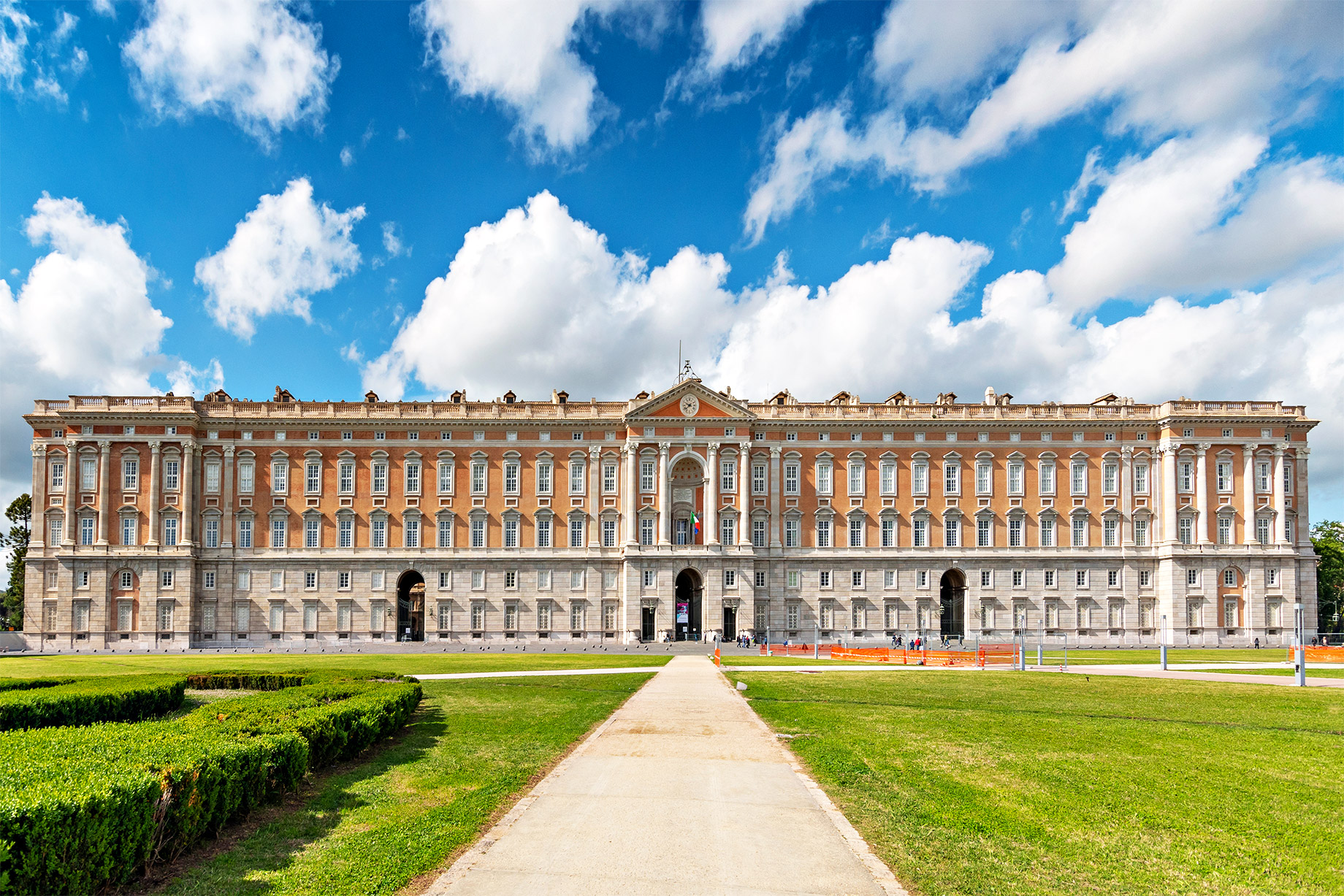
The Royal Palace of Caserta, located just north of Naples, Italy, is a grand 18th-century palace that once served as the residence of the Bourbon kings of Naples. Designed by architect Luigi Vanvitelli, this impressive Baroque complex features 1,200 rooms, including the grandiose Throne Room, the ornate Palatine Chapel, and the luxurious Royal Apartments. The palace is surrounded by a vast, beautifully landscaped park, complete with fountains, cascades, and sculptures. Visitors can explore the palace’s lavish interiors and enjoy the serene setting of its expansive gardens.
19. Castle of the Moors: A Majestic Ruin in Sintra, Portugal
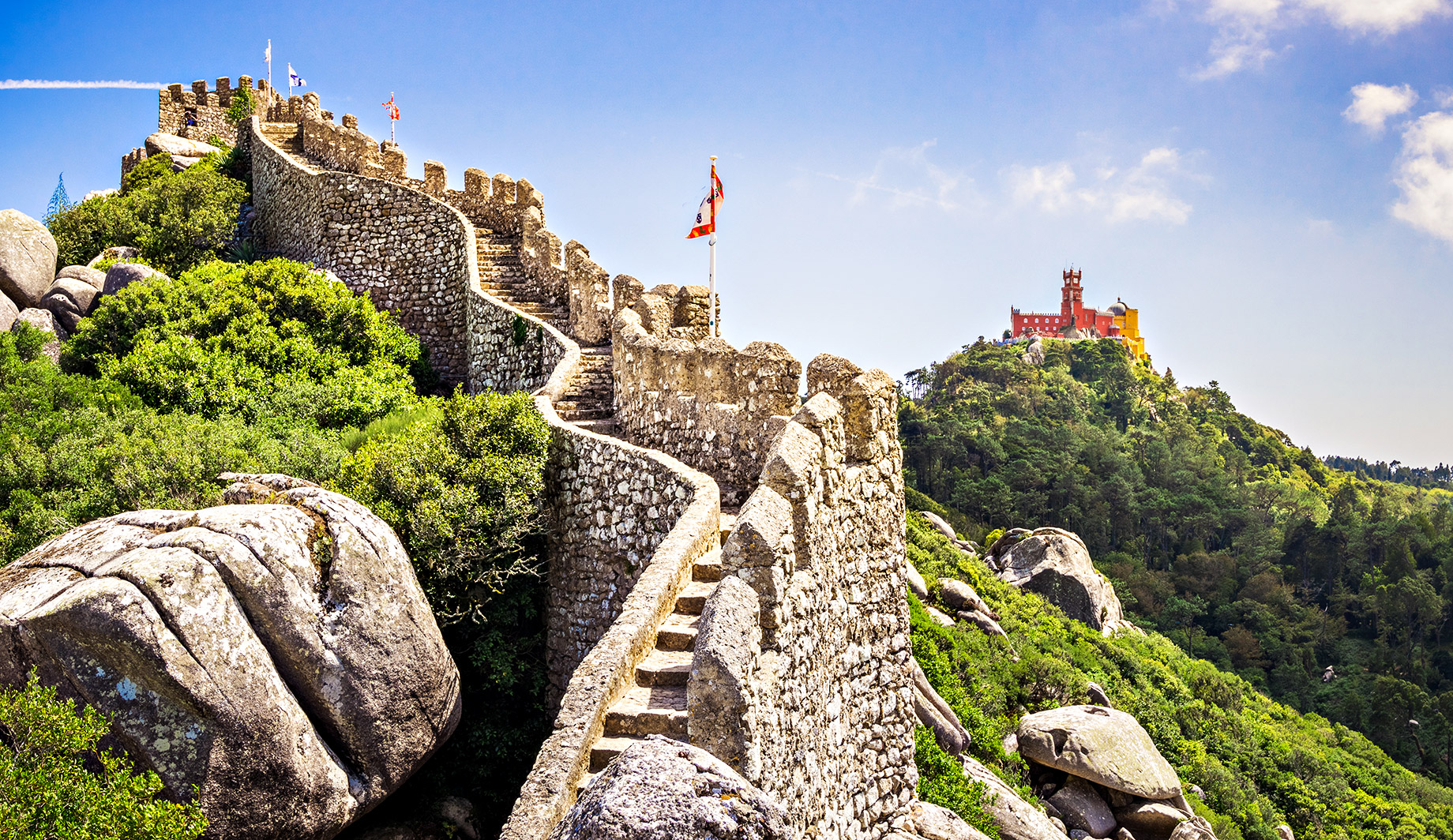
Perched atop a hill in the Sintra Mountains, the Castle of the Moors is a mesmerizing 8th-century fortress that offers breathtaking views of the surrounding landscape. Built during the Moorish occupation of the Iberian Peninsula, the castle features imposing stone walls that wind along the hill’s contours. Wander along the ancient ramparts, take in the stunning vistas, and immerse yourself in the rich history of this fascinating ruin.
20. Hohenzollern Castle: A Fairy-Tale Fortress in the Swabian Alps, Germany
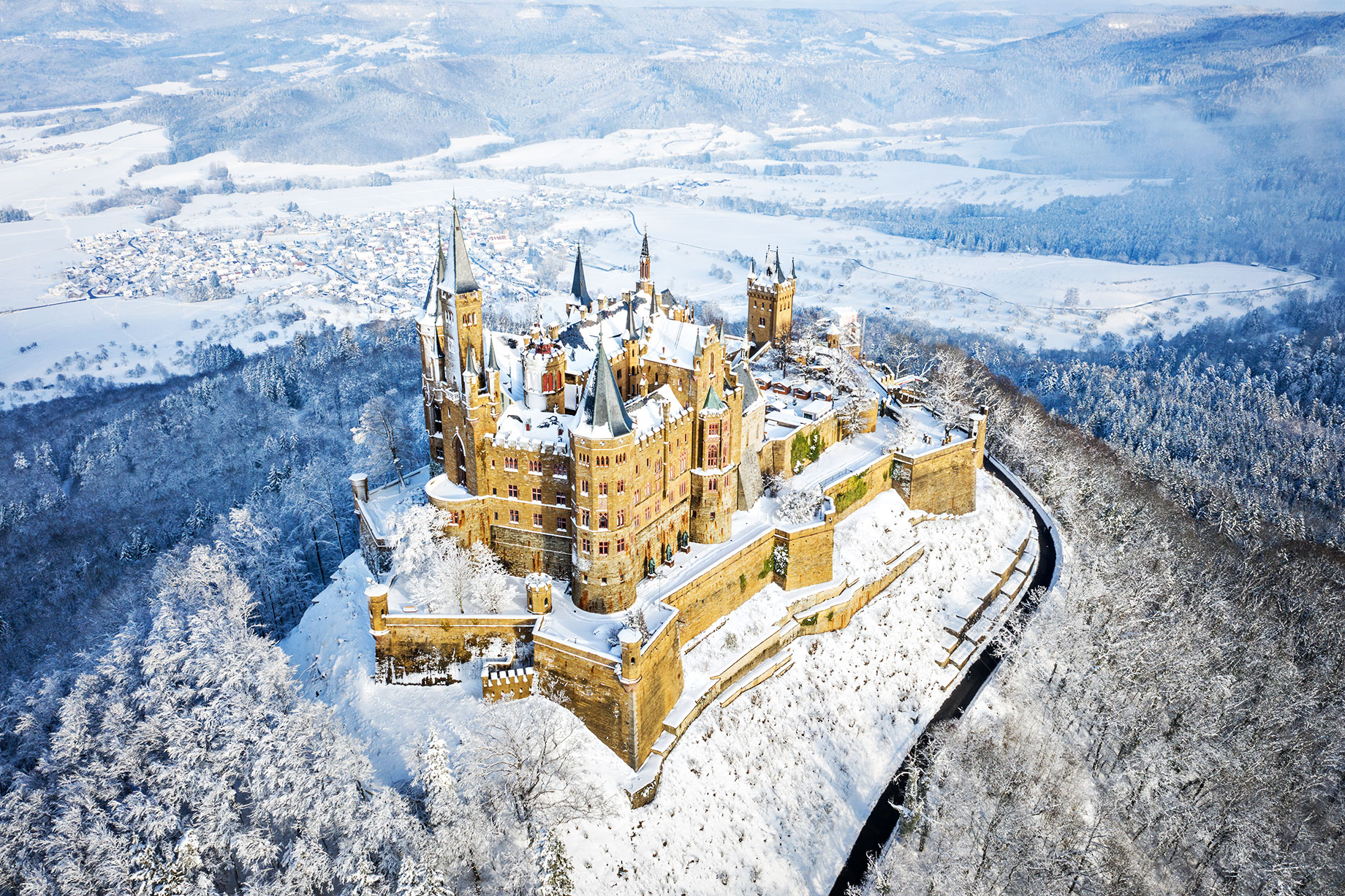
Hohenzollern Castle, an enchanting fortress nestled in the Swabian Alps, is the ancestral seat of the Hohenzollern family, who ruled Prussia and the German Empire. This neo-Gothic masterpiece rises dramatically from the lush green landscape and enchants visitors with its fairy-tale charm. Explore the castle’s sumptuous interiors, including the King’s Bedchamber and the Count’s Hall, and marvel at the vast collection of art and historical artifacts.
21. Belvedere Palace: A Baroque Masterpiece in Vienna, Austria
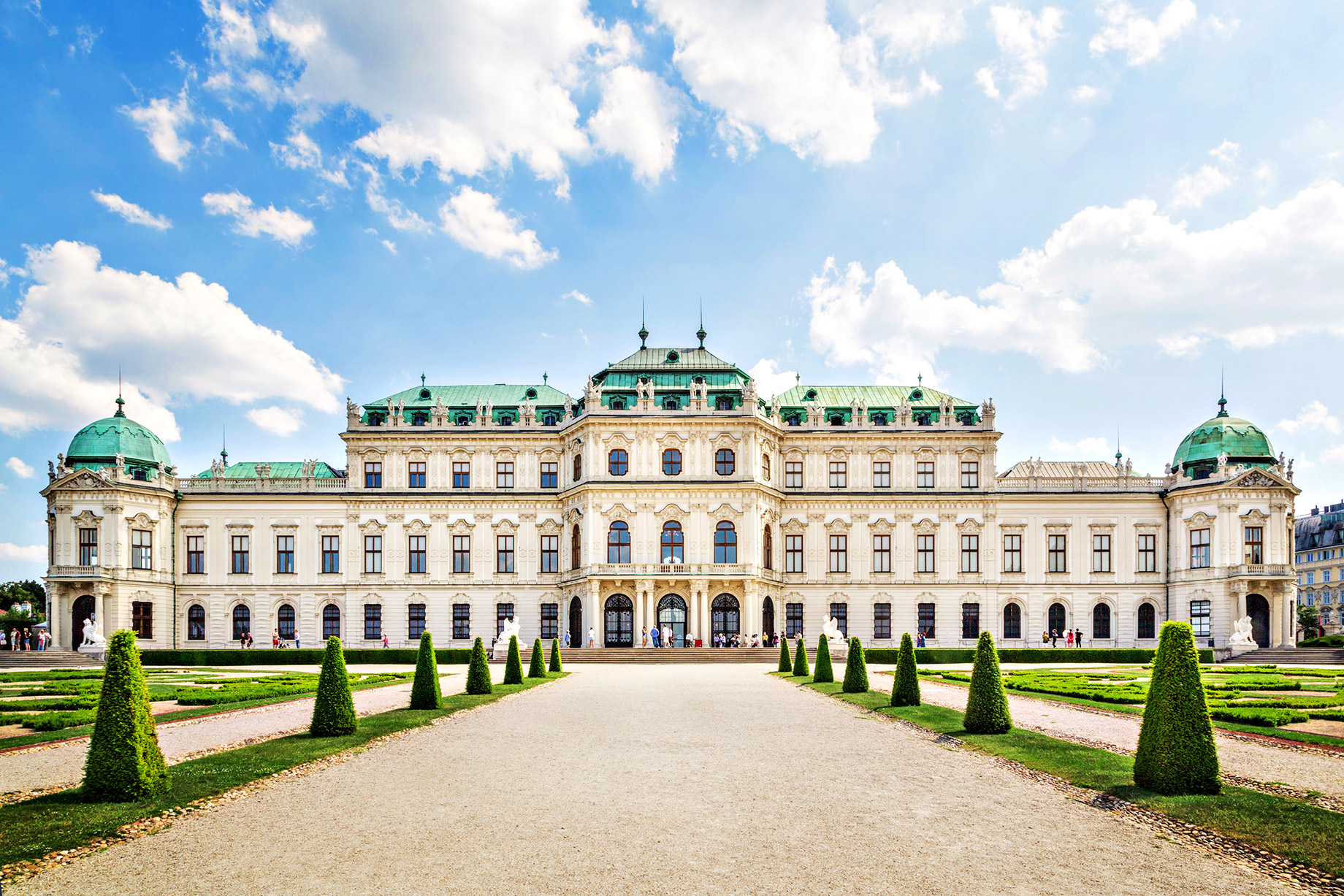
Belvedere Palace, a stunning Baroque complex in Vienna, Austria, comprises two palaces, the Upper and Lower Belvedere, surrounded by beautifully landscaped gardens. Built in the early 18th century as a summer residence for Prince Eugene of Savoy, the palace now houses the Belvedere Museum, which boasts an impressive collection of Austrian art, including masterpieces by Gustav Klimt. Visitors can explore the palace’s sumptuous interiors, wander through the elegant gardens, and marvel at the breathtaking artworks on display.
22. Predjama Castle: A Dramatic Hideaway in the Slovenian Countryside
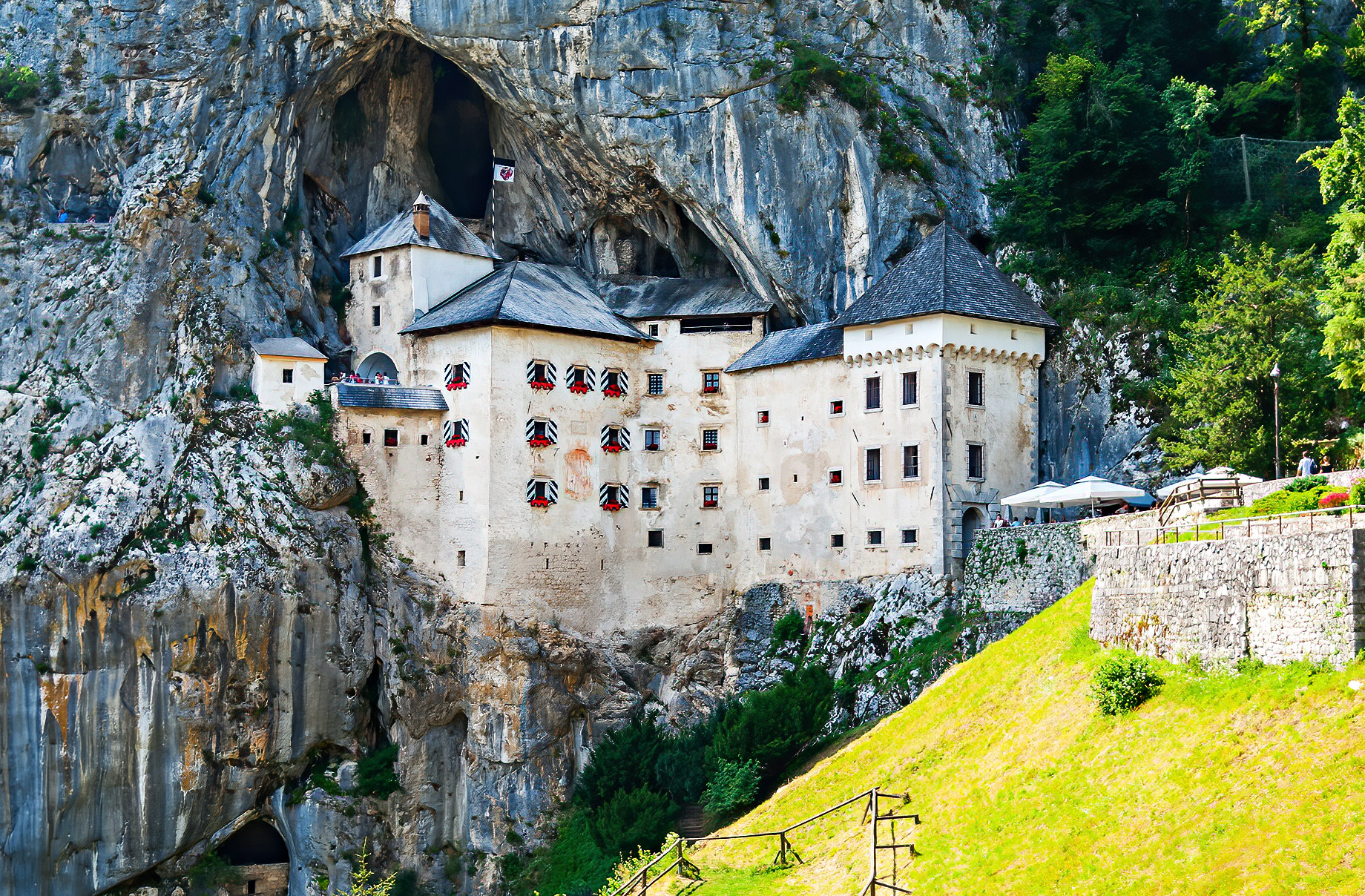
Built into a towering cliff face in the Slovenian countryside, Predjama Castle is an extraordinary example of medieval ingenuity. This 13th-century fortress served as the stronghold of the infamous knight Erazem Lueger, who defied the Habsburgs from his impregnable hideaway. Today, visitors can explore the castle’s labyrinthine rooms and secret passages, and marvel at the striking beauty of the surrounding karst landscape.
23. Trakai Island Castle: A Gothic Treasure on Lake Galvė, Lithuania
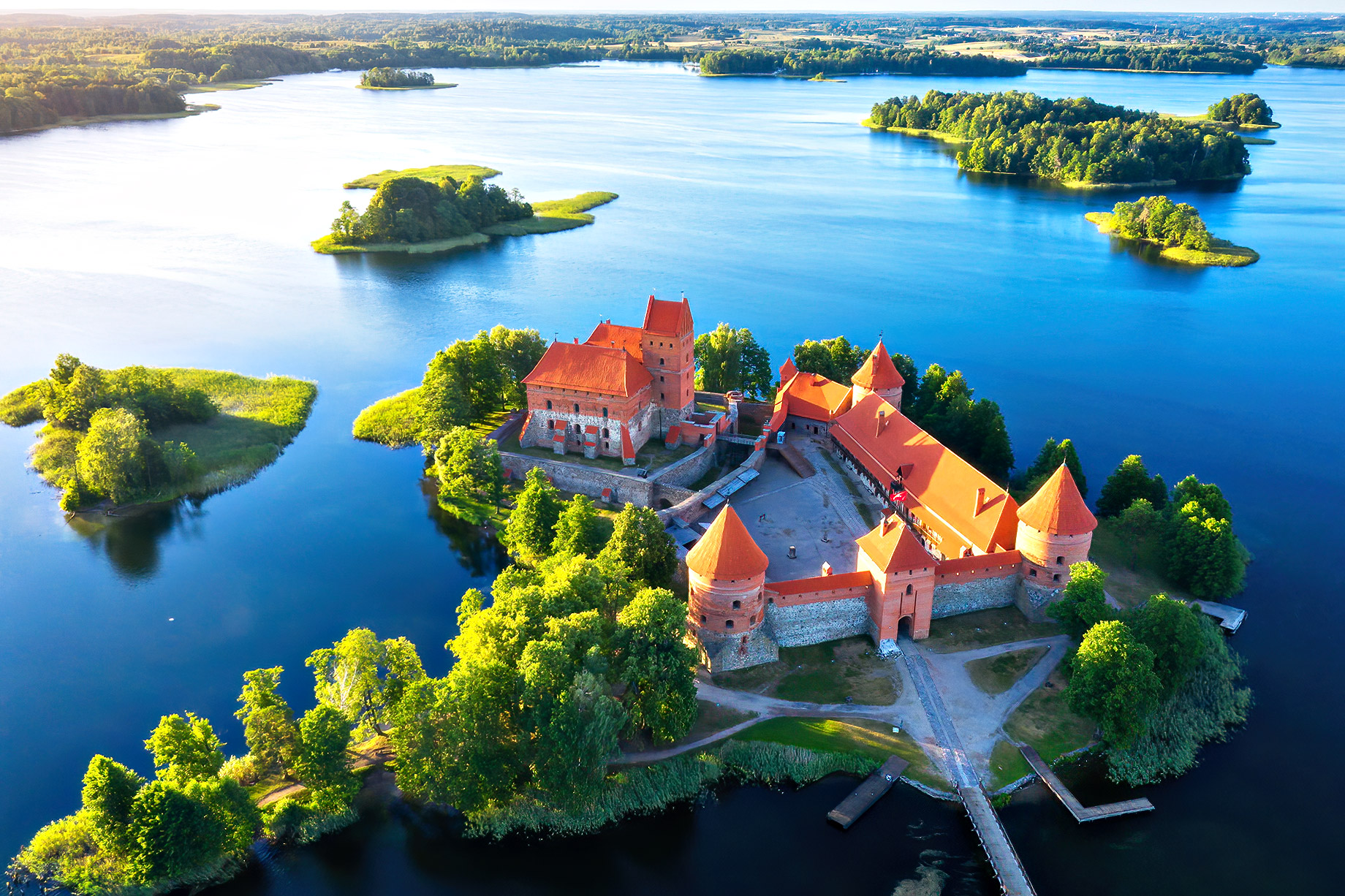
Trakai Island Castle, an exquisite Gothic fortress situated on an island in Lake Galvė, is a popular destination in Lithuania. Built in the 14th century by the Grand Duke Kęstutis, the castle served as an important defensive and political center during the reign of the Lithuanian Grand Dukes. Visitors can explore the well-preserved castle and its museum, which showcases a vast collection of medieval artifacts, and enjoy a leisurely boat ride around the scenic lake.
24. Heidelberg Castle: A Romantic Ruin Overlooking the Neckar River
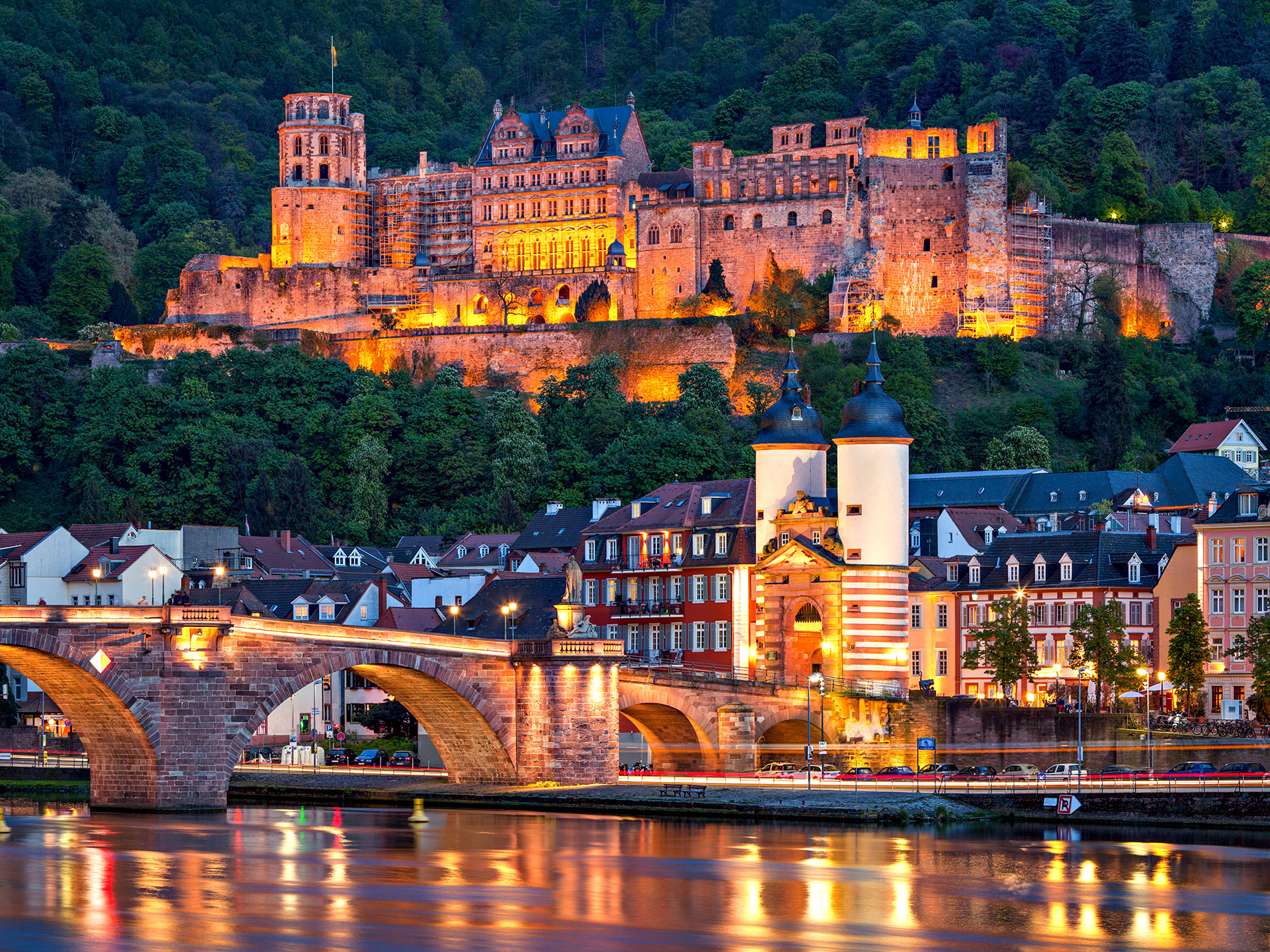
Perched on a hill overlooking the picturesque town of Heidelberg and the Neckar River, Heidelberg Castle is a romantic ruin that dates back to the early 13th century. This once-majestic fortress has witnessed a turbulent history, including wars, fires, and lightning strikes, which have left it partially in ruins. The castle’s fascinating mix of architectural styles – Gothic, Renaissance, and Baroque – reflect its storied past. Visitors can explore the castle’s sprawling grounds, admire the beautiful views of Heidelberg, and marvel at the world’s largest wine barrel, the Heidelberg Tun, housed within the castle’s cellars.
25. Eltz Castle: A Medieval Treasure in the Moselle Valley
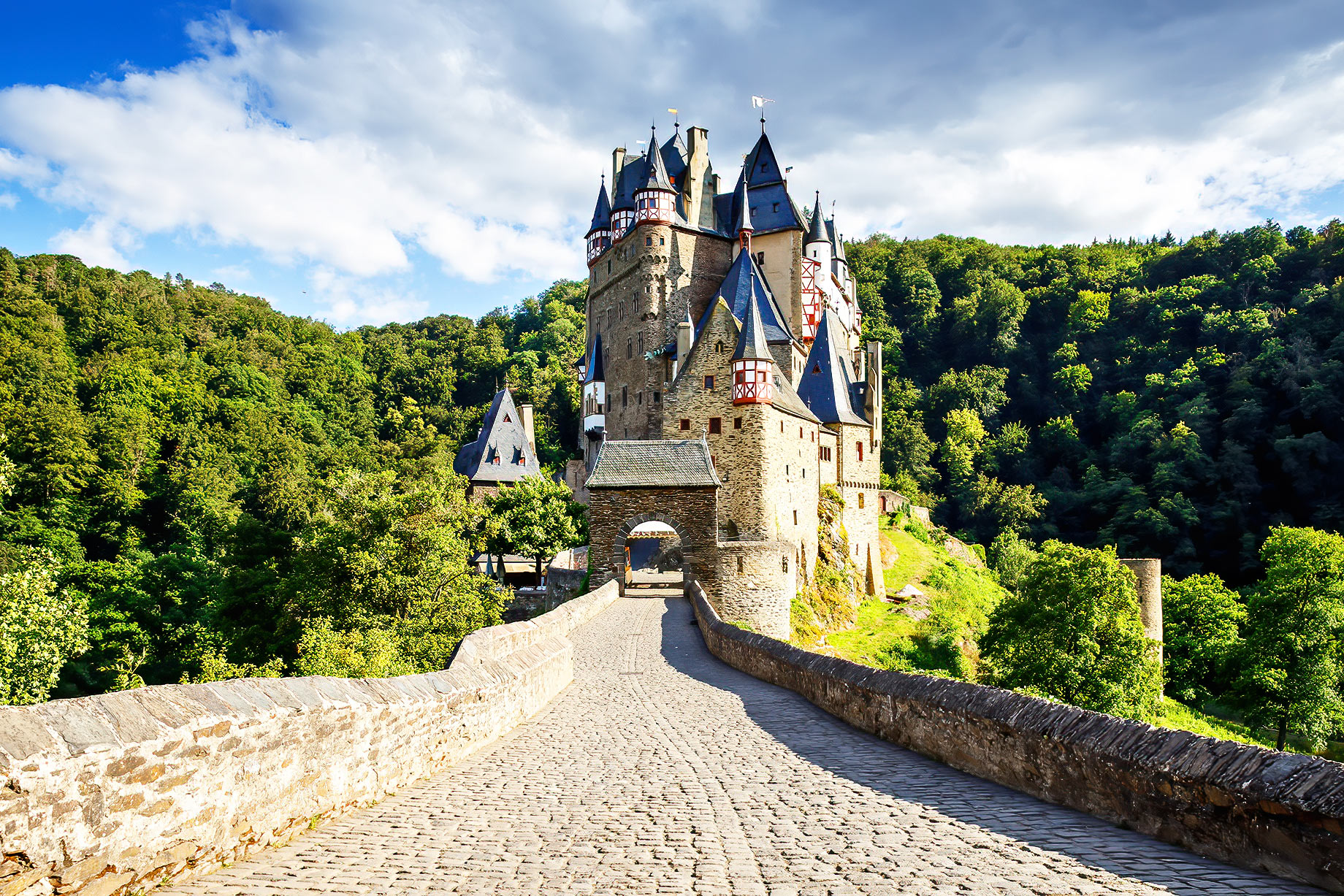
Nestled deep within the dense forests of the Moselle Valley, Eltz Castle is a remarkably well-preserved medieval fortress that has remained in the same family for over 800 years. Its picturesque setting, surrounded by verdant woods and a meandering river, only adds to its fairy-tale allure. The castle’s impressive architecture includes a central keep and several smaller towers, each boasting their distinct style. Visitors can explore the castle’s beautifully preserved interiors, including the opulent Knights’ Hall and the ornate Treasury, and immerse themselves in the rich history of this captivating stronghold.
26. Lichtenstein Castle: A Neo-Gothic Marvel on the Swabian Alb
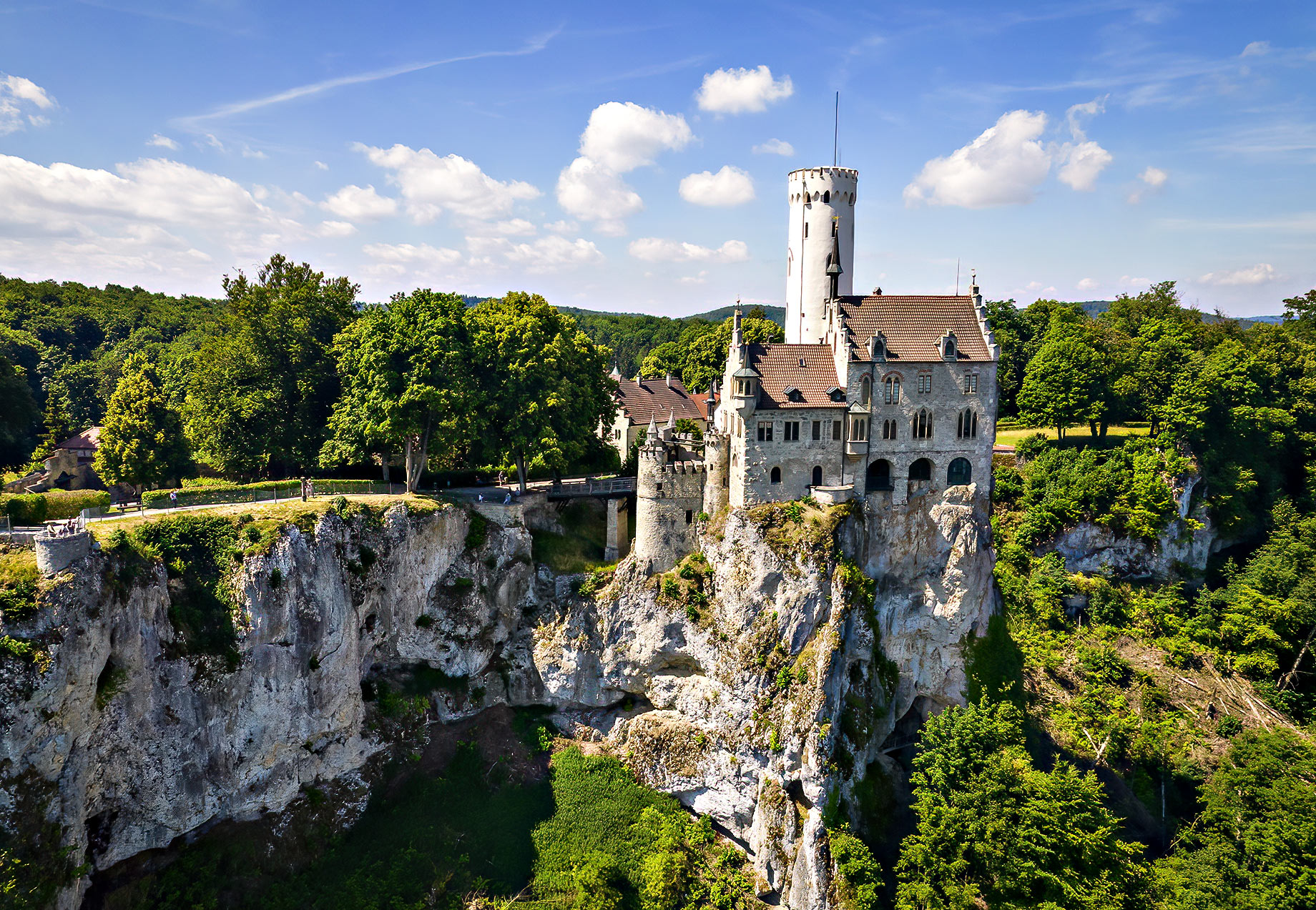
Perched dramatically on a cliff edge in the Swabian Alb region of Germany, Lichtenstein Castle is a stunning 19th-century neo-Gothic fortress. Commissioned by Duke Wilhelm of Urach, this architectural gem was inspired by the medieval castles of Germany’s past and features soaring towers, intricate stonework, and a drawbridge. Visitors can embark on guided tours of the castle’s lavish interiors, adorned with period furnishings, art, and armour. The castle’s breathtaking location offers spectacular views of the surrounding countryside and the Echaz Valley below, making Lichtenstein Castle an unforgettable destination for any traveller.
27. Wilanów Palace: A Polish Baroque Gem in Warsaw, Poland
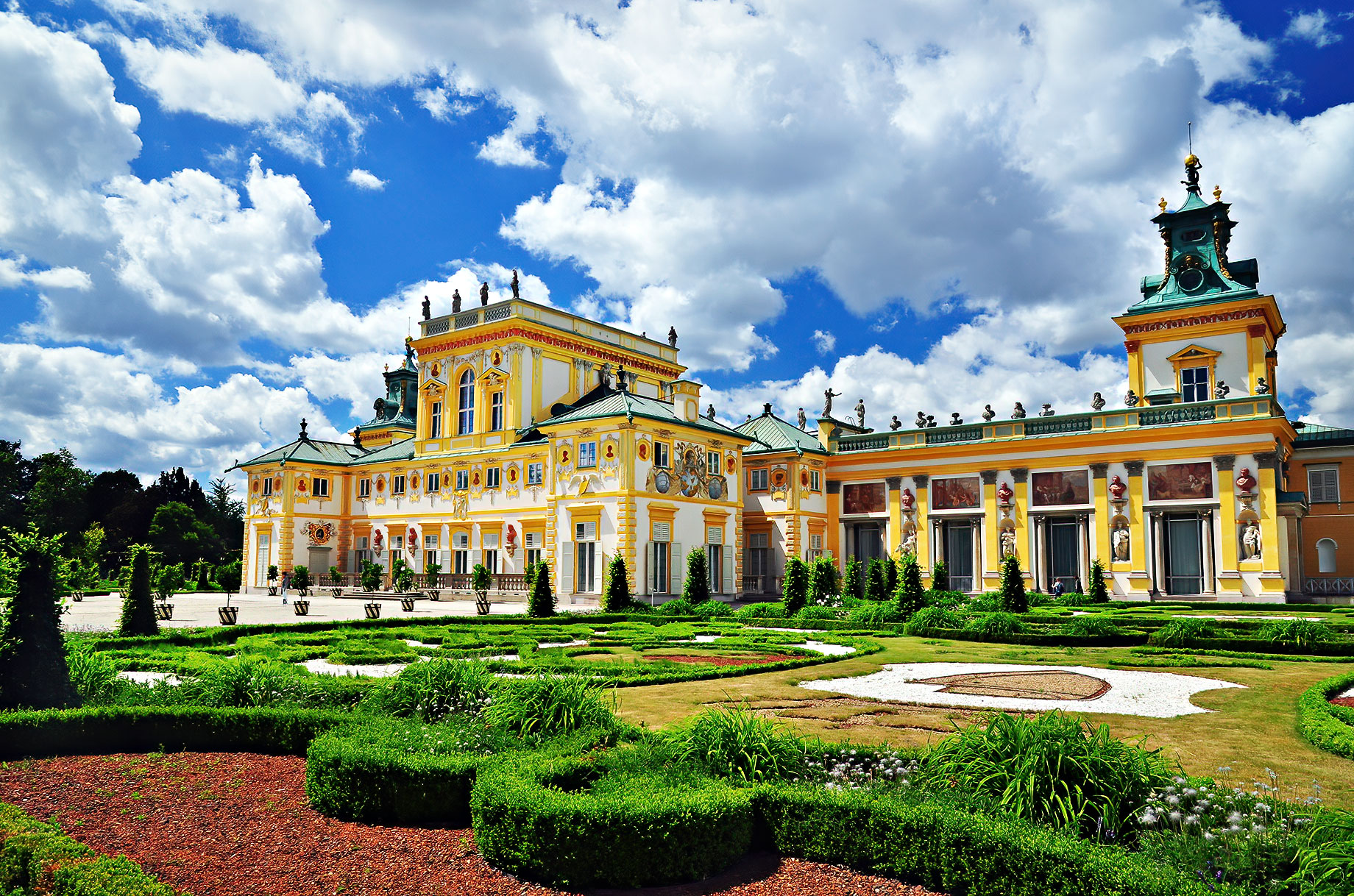
Wilanów Palace, situated in the Wilanów district of Warsaw, Poland, is a beautiful Baroque palace built in the late 17th century for King John III Sobieski. Often referred to as the “Polish Versailles,” the palace features a striking yellow and white facade, elegant interiors, and a splendid park with landscaped gardens. Today, the palace houses a museum showcasing a vast collection of art, including paintings, sculptures, and decorative arts, as well as the royal apartments. Visitors can immerse themselves in Polish history and admire the palace’s exceptional Baroque architecture.
28. Castel del Monte: A Mysterious Octagonal Wonder in Italy
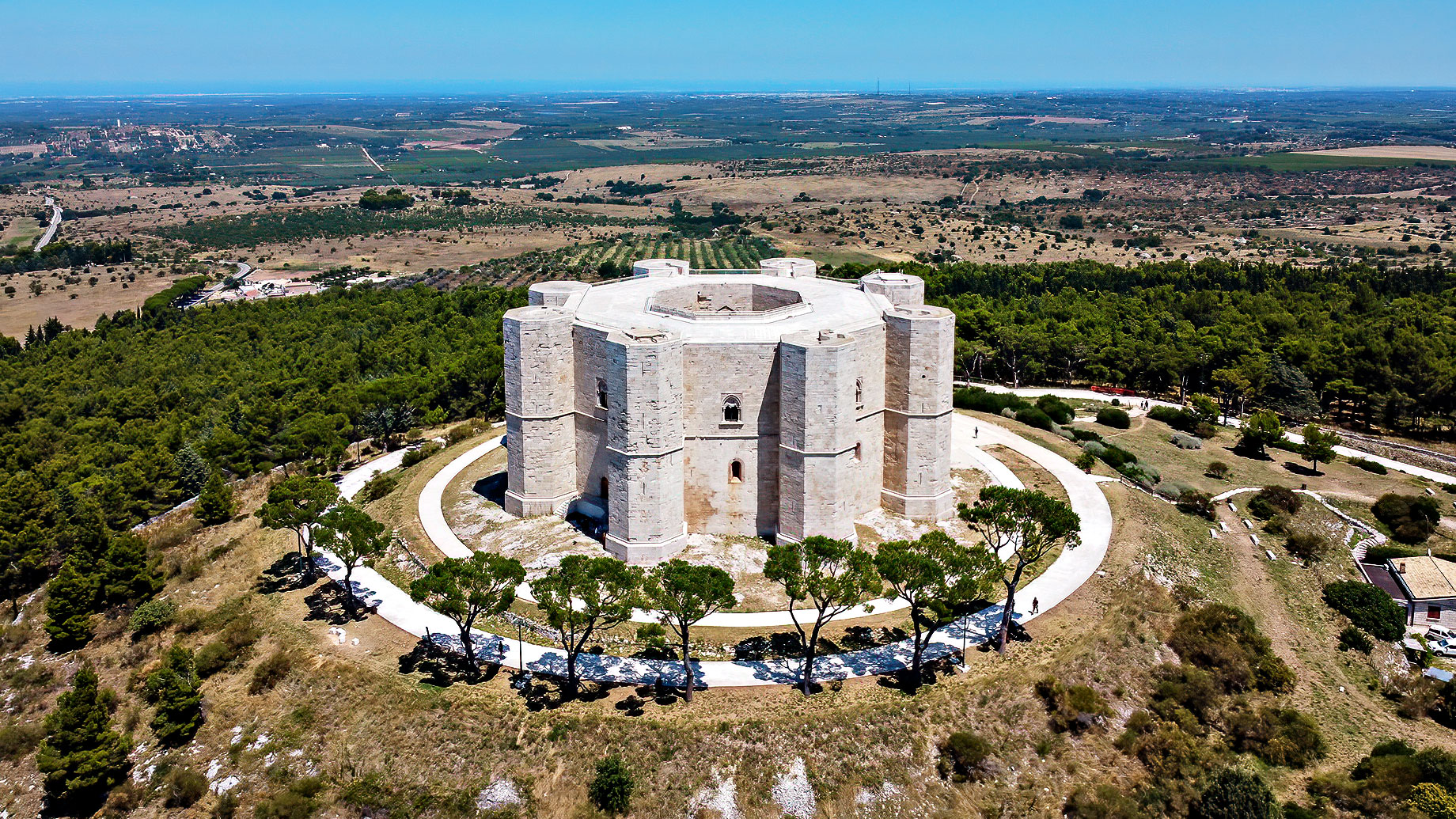
Castel del Monte, a unique 13th-century fortress, is perched on a hill in the Apulia region of Italy. Commissioned by the Holy Roman Emperor Frederick II, this enigmatic castle is renowned for its octagonal shape and precise geometric design. The castle’s sophisticated blend of classical, Gothic, and Islamic architectural elements has earned it UNESCO World Heritage status. Visitors can explore the castle’s intriguing rooms and enjoy panoramic views of the surrounding countryside.
29. Kronborg Castle: Denmark’s Majestic Renaissance Fortress
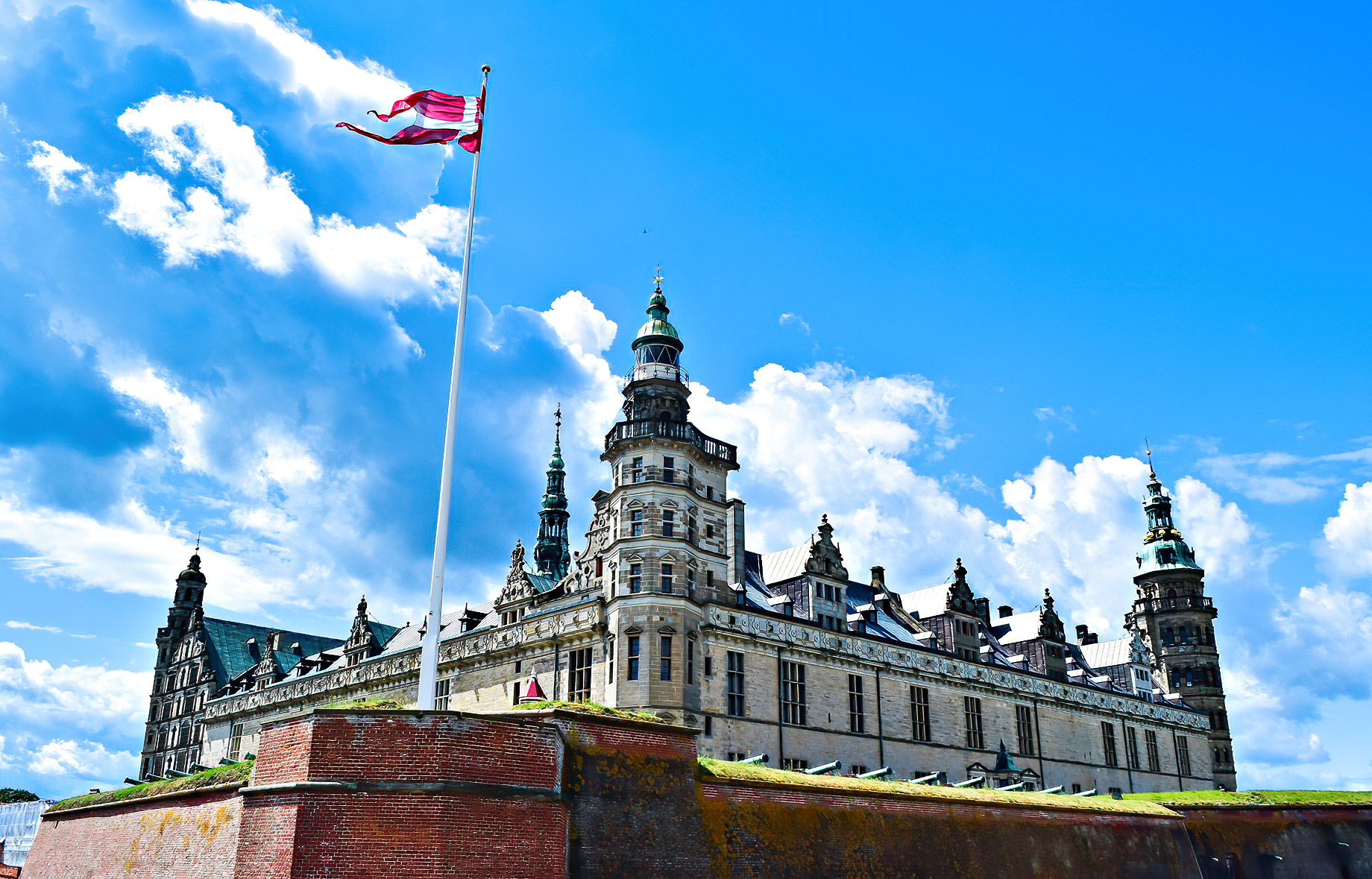
Kronborg Castle, a majestic Renaissance fortress in Helsingør, Denmark, has played a pivotal role in the country’s history, protecting and controlling the strategic Øresund Strait between Denmark and Sweden. Commissioned by King Frederick II in the 16th century and famous as the setting for Shakespeare’s “Hamlet,” the UNESCO World Heritage Site is renowned for its cultural and historical significance, featuring lavish royal chambers, a grand ballroom, and intricately carved woodwork in the Knights’ Hall. Visitors can explore eerie underground passages and casemates, while the castle continues to captivate with its stunning beauty, fascinating history, and legendary connection to Shakespeare’s iconic play.
30. Royal Palace of La Granja de San Ildefonso: Spain’s Baroque Retreat
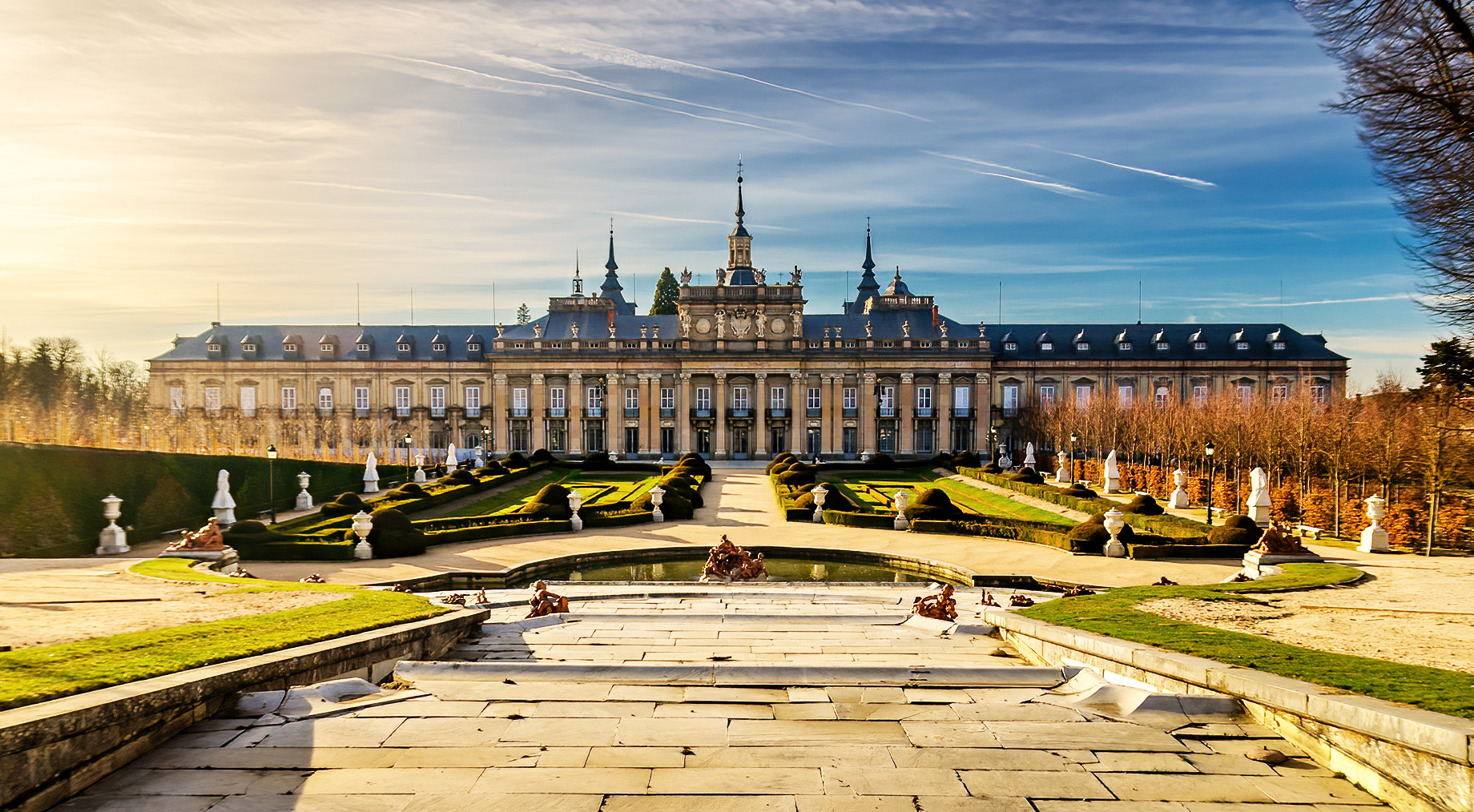
The Royal Palace of La Granja de San Ildefonso, near Segovia in Spain, is an 18th-century Baroque palace that once served as the Spanish royal family’s summer residence. Designed by architect Filippo Juvarra and inspired by France’s Palace of Versailles, the palace showcases beautifully decorated interiors such as the lavish Throne Room with frescoes and gilded stucco, the Royal Chapel housing religious art, and the Hall of Mirrors reminiscent of its Versailles counterpart. Surrounded by extensive gardens featuring manicured lawns, ornamental fountains, and intricate sculptures, La Granja de San Ildefonso provides visitors with a fascinating insight into Spain’s royal past and is a must-visit destination for history and architecture enthusiasts.
31. Palazzo Vecchio: The Historic Heart of Florence
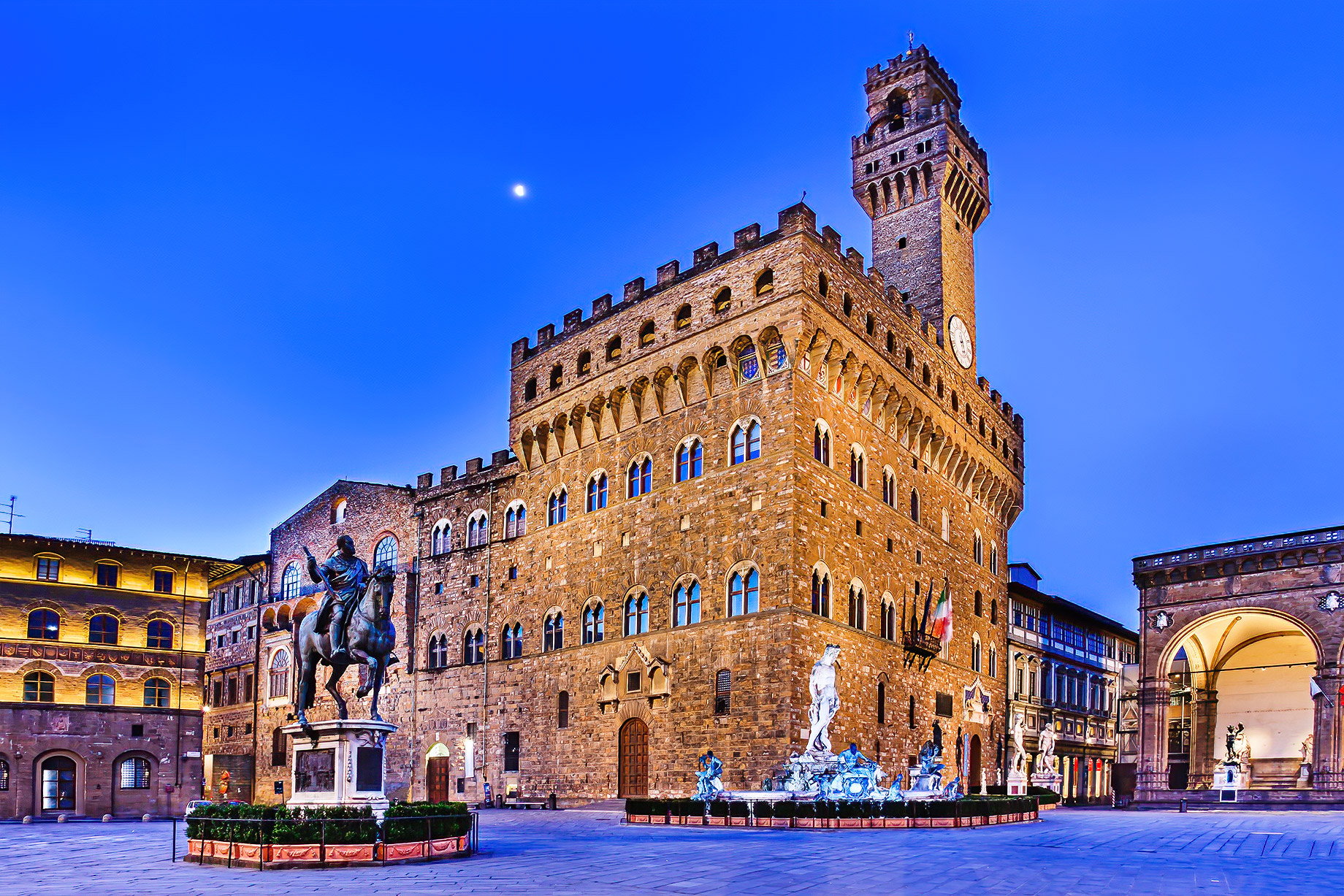
Palazzo Vecchio, an emblem of Florence’s rich history and political power, stands tall in the Piazza della Signoria. Constructed in the early 14th century, this medieval fortress-palace served as the city’s government seat and the ruling Medici family’s residence before their move to Palazzo Pitti. Boasting impressive architecture with crenellated battlements and a towering presence, Palazzo Vecchio invites visitors to explore the ornate Salone dei Cinquecento, adorned with frescoes and artwork by renowned artists like Michelangelo and Leonardo da Vinci, and the Medici family’s opulent private chambers. A must-visit destination for its historical and artistic significance, Palazzo Vecchio also offers breathtaking city views from the top of its tower.
32. Palazzo Pitti: Florence’s Grand Renaissance Palace
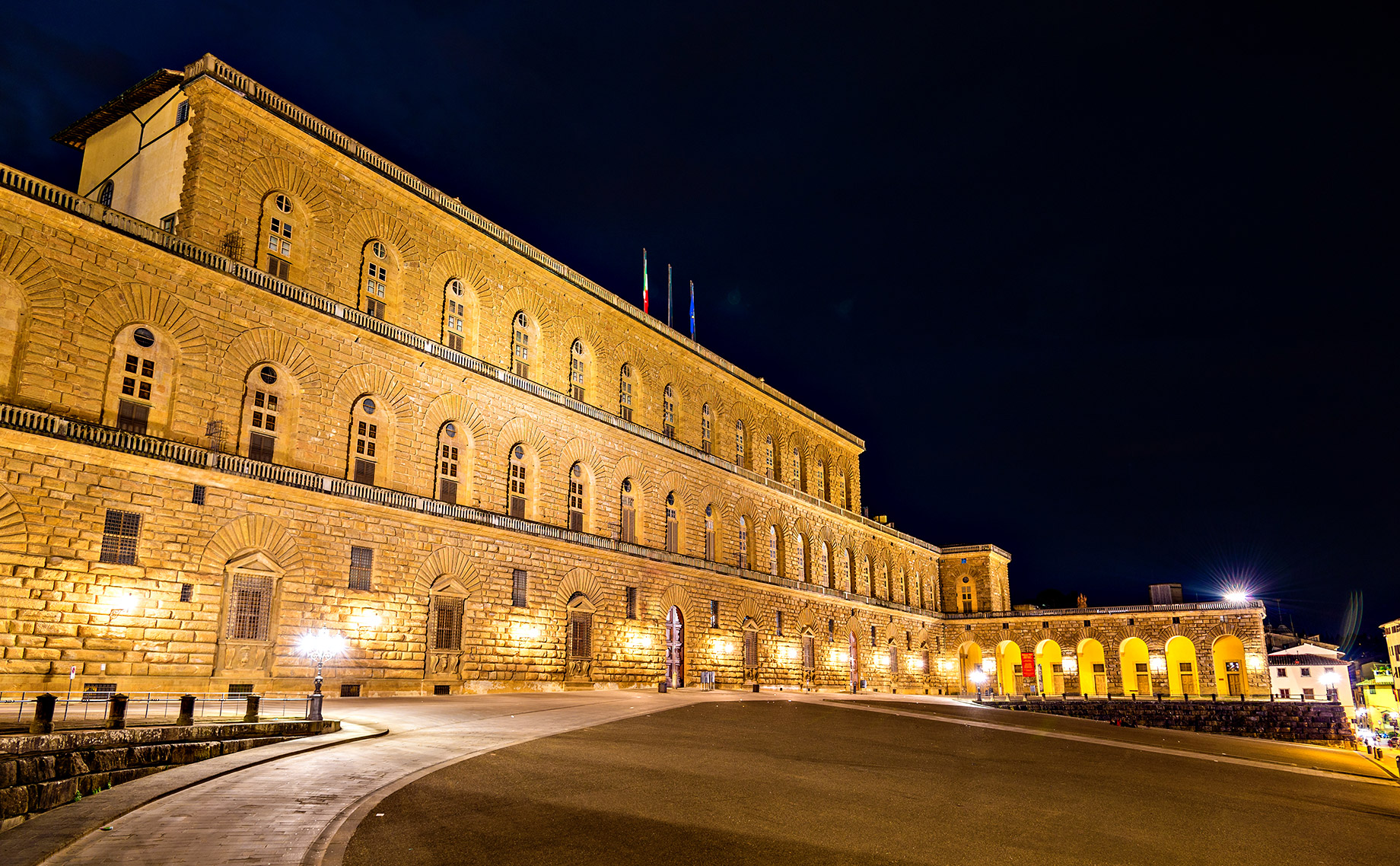
Palazzo Pitti, an impressive Renaissance palace in picturesque Florence, boasts an extensive history and a significant art collection. Constructed in the 15th century for influential banker Luca Pitti, the palace was later acquired and transformed into the grand ducal residence by the ruling Medici family. Housing several important museums such as the Palatine Gallery, which displays extraordinary Renaissance paintings by Raphael, Titian, and Caravaggio, Palazzo Pitti also offers a glimpse into the Medici family’s opulent lifestyle through the Royal Apartments and the Silver Museum’s precious objects. The palace’s stunning architecture, lavish interiors, and vast art collections make it a must-visit destination for those seeking to immerse themselves in Florence’s rich cultural and artistic heritage.
33. Castel Sant’Angelo: Rome’s Ancient Fortress and Papal Refuge
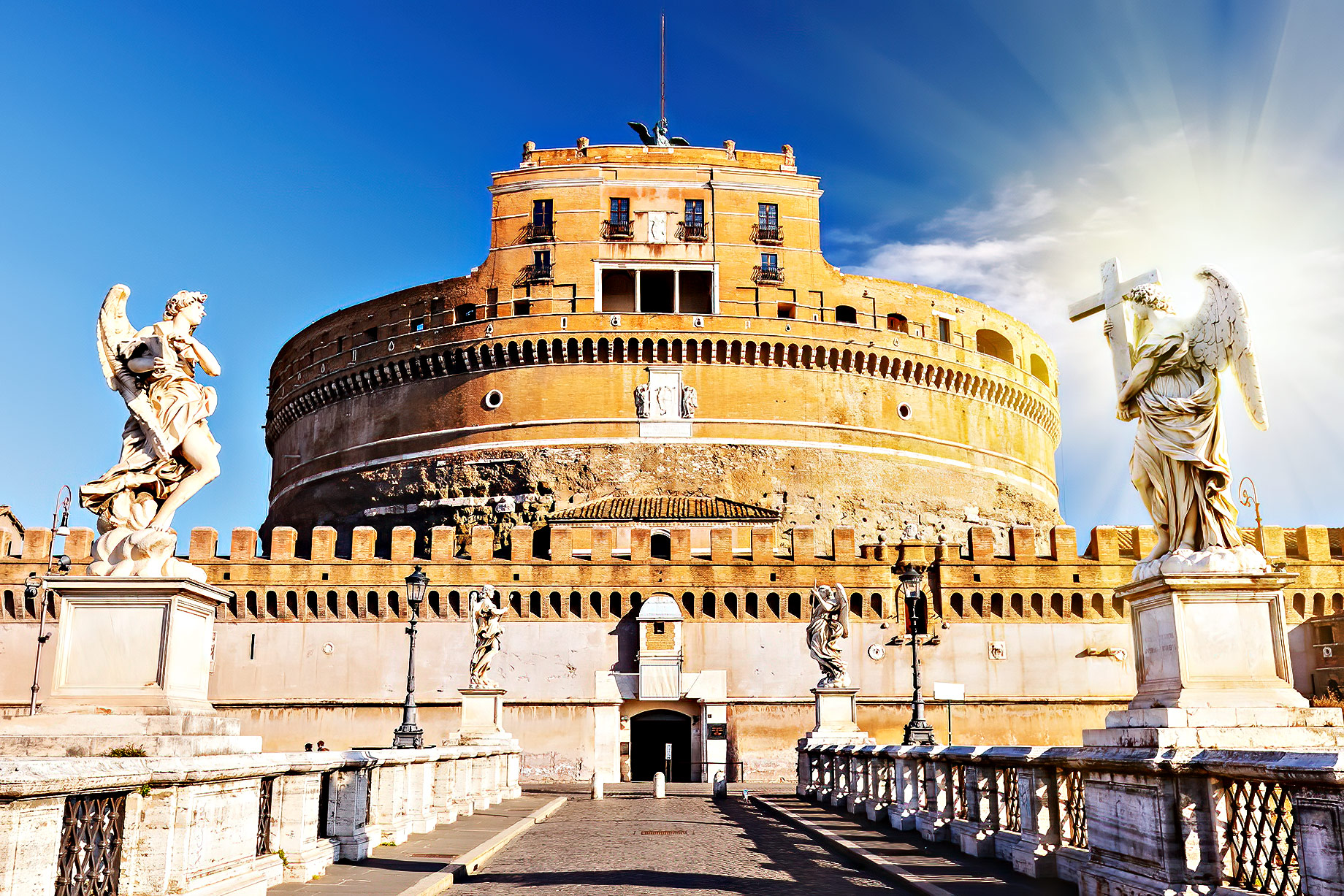
Finally, we have Castel Sant’Angelo, an iconic fortress situated along the banks of the Tiber River in Rome, which boasts a rich and complex history, spanning nearly two millennia. Originally built in the 2nd century as the Mausoleum of Hadrian, the structure was later transformed into a fortress and papal residence, complete with secret passageways that connected it to the Vatican. Today, Castel Sant’Angelo is a popular museum and tourist attraction, inviting visitors to explore its various chambers, courtyards, and terraces. Within the castle, one can admire an extensive collection of artwork, artifacts, and armaments that chronicle Rome’s fascinating history. The castle’s rooftop terrace offers breathtaking panoramic views of the Eternal City, including St. Peter’s Basilica and the winding Tiber River. With its storied past and stunning vistas, Castel Sant’Angelo is a must-visit destination for anyone seeking to immerse themselves in Rome’s rich cultural heritage.
Wrapping Up
Europe has long been a cherished destination for travellers from all corners of the globe, drawn to its diverse cultural tapestry, rich history, and breathtaking landscapes. Across the continent, castles and palaces stand as majestic testaments to the intricate past, echoing the stories of kings, queens, knights, and nobility. These architectural marvels, ranging from medieval fortresses to opulent royal residences, have become iconic tourist hotspots, inviting visitors to delve into the heart of Europe’s fascinating heritage.
The allure of these magnificent structures extends far beyond their impressive facades and intricate interiors. They stand as symbols of power and wealth, testaments to the artistry and vision of the architects and craftsmen who brought them to life. As visitors explore their grand halls and idyllic gardens, they are transported back in time to an era of chivalry, romance, and political intrigue, when the fate of nations was shaped within their walls.
From the romantic ruins of Heidelberg Castle overlooking Germany’s Neckar River to the fairytale splendour of France’s Château de Chambord in the heart of the Loire Valley, each castle and palace offers a unique glimpse into a different chapter of Europe’s storied past. Whether it’s the intricate Moorish designs of Spain’s Alhambra Palace or the awe-inspiring Gothic beauty of Prague Castle in the Czech Republic, these captivating landmarks continue to enchant travellers and serve as gateways to Europe’s rich cultural legacy, making them must-see destinations for any journey across the continent.

